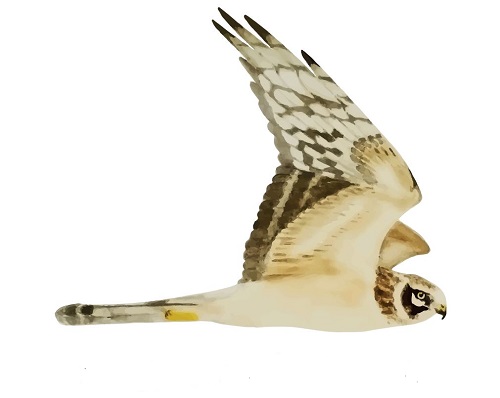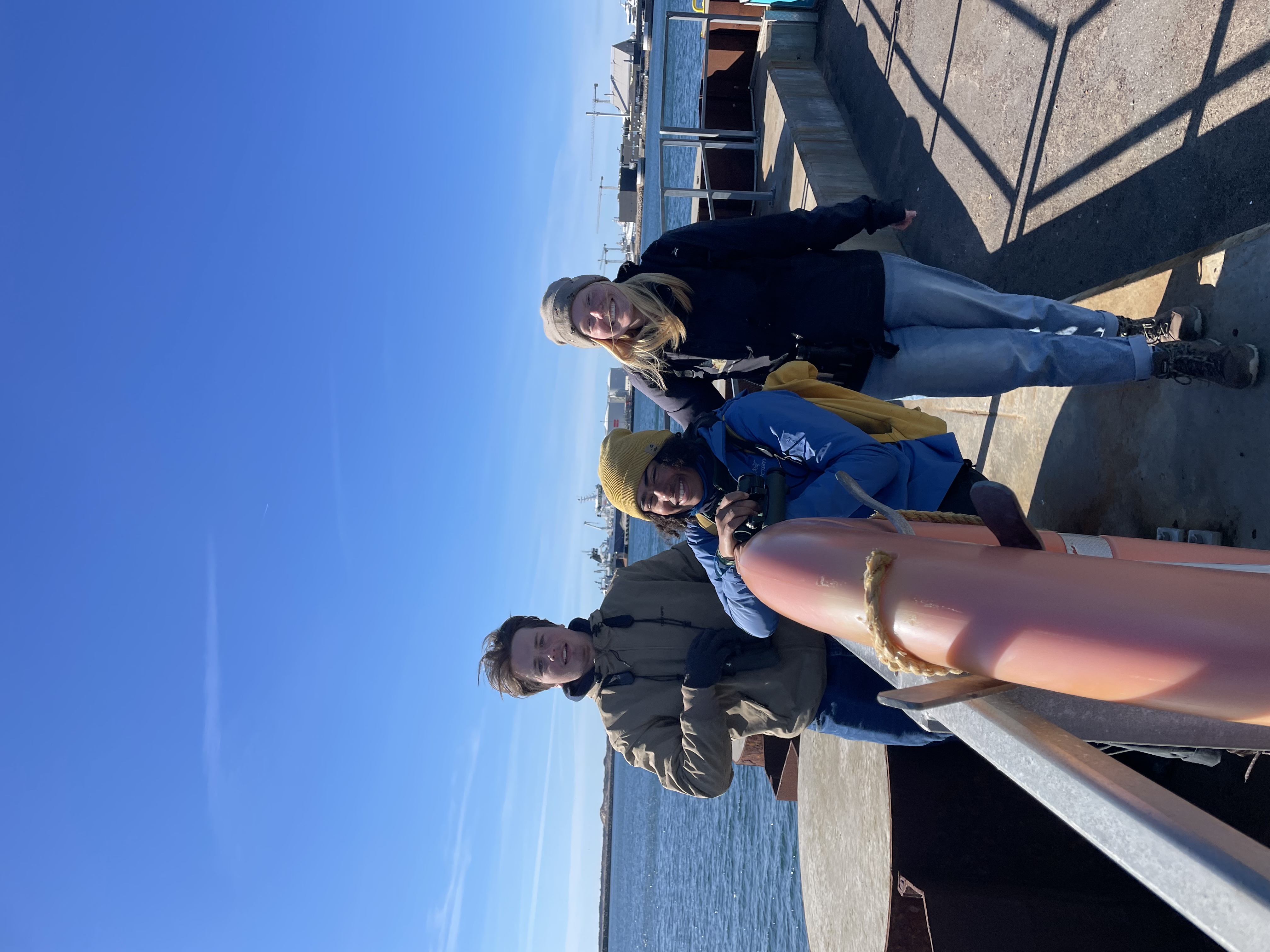Her på Skagen Fuglestations blog bringes korte nyheder i dagbogsformat om hændelser på fuglestationen.
We have defeated the Buckthorn
For the morningobs Rasmus,Tue and I went to World’s End 1 to see more of the passerine migration. When we arrived there at sunrise we could already hear some local birds singing. The numbers of Finches were a bit lower today. But five Ring Ouzels (Ringrossel) came around. Our first ones of the season and my first ones ever. We also found one of the King Eiders (Kongederfugel) again. The migration on the sea was also going on again. Rasmus counted at least 350 Red-Throated Divers (Rødstrubbet Lom) and we had four Shags (Topskarv).
In the fourth hour the migration slowed down. So Tue went to Kabeltrommlen to start cutting Buckthorn to improve the view. Later Rasmus and I joined him, we cleared the whole area successfully from Buckthorn.
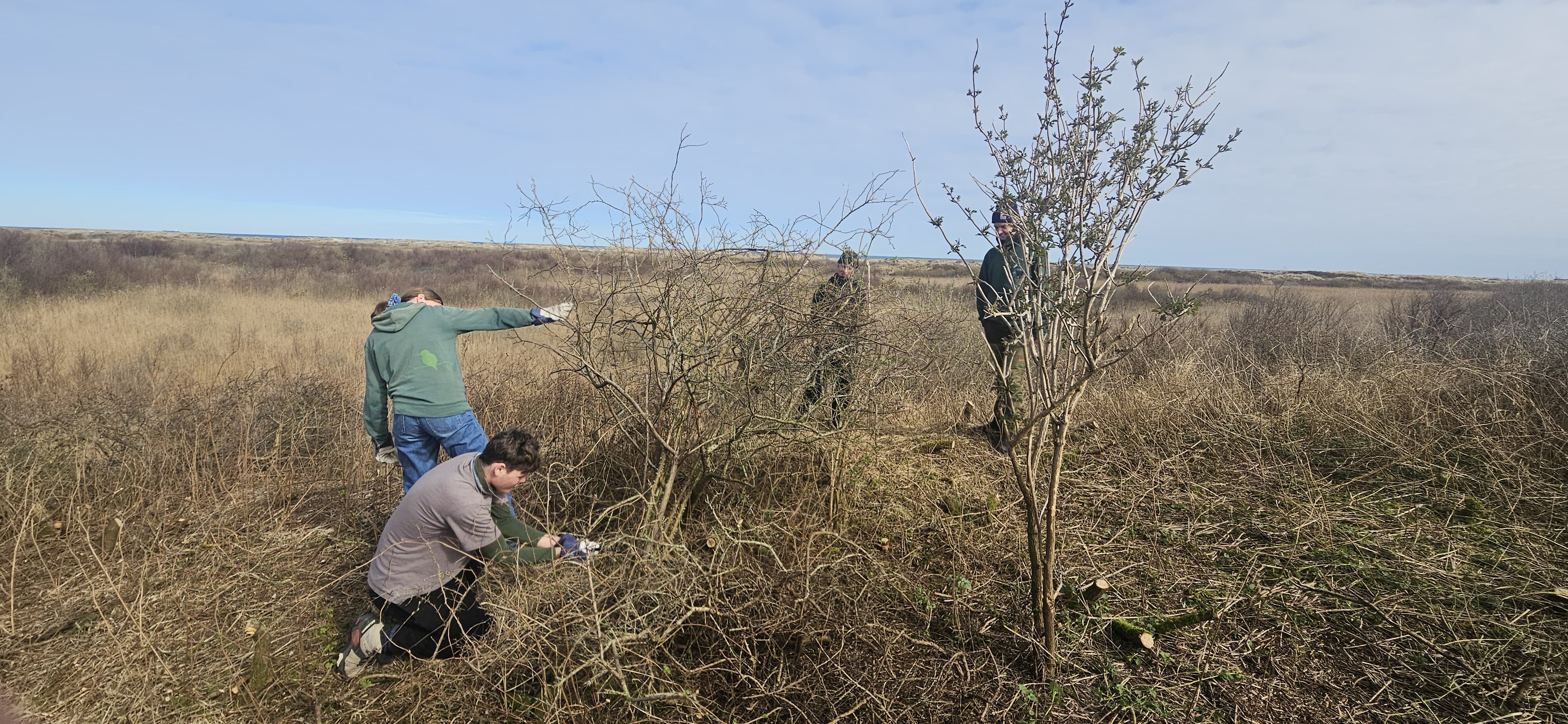 Fighting againsnt the Buckthorn
Fighting againsnt the Buckthorn
Ringing went much better today than yesterday. They catched sixteen birds in total. Apart from ringing the ringers found a resting Corn Bunting (Bomlaerke), which is quite rare here in Skagen. And they also flushed a Jacksnipe (Enkeltbekkasin), which was a lifer for Lucas and Chris.
In the afternoon we went to Skagen to get some Ice Cream. After that we said goodbye to Isabel who went back to Aarhus in the afternoon.
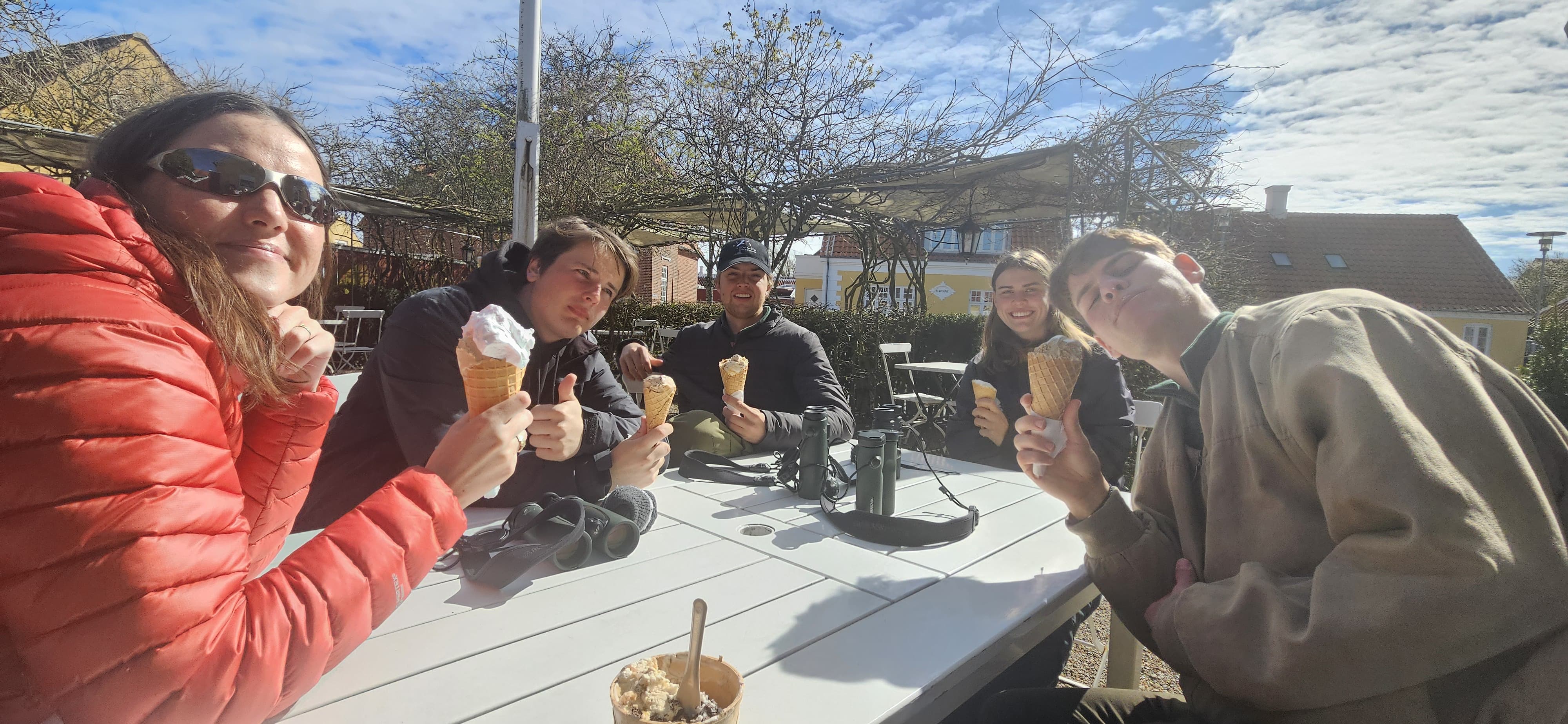 happy volunteers eating ice cream
happy volunteers eating ice cream
Later Rasmus went out for a walk and found a Great Gray Shrike (Stor Tornskade). We others had a chilled afternoon.
When it gets dark later we go out and try to catch a Bittern. Let's see if we are successful.
Highlights of the observations:
Ring Ouzel (Ringdrossel) 5
King Eider (Kongederfugl) 1
Shag (Topskarv) 4
Ringing (Kabeltromlen):
Gærdesmutte - 4
Rødhals - 1
Gransanger - 4
Musvit - 1
Solsort - 4
Rørspurv - 1
Jernspurv - 1
Total: 16
Raptor migration in Skagen today
Today’s observations in Dofbasen from observers in the area
People: Cora Köberle, Rasmus Matthiesen-Juhl, Christopher Moser-Purdy, Tue Baaner, Isabel Hunter, Lucas Corneliussen and Simon S Christiansen
The Wind Continues
Ah, back again in Skagen. After a small holiday, I am once again back in Skagen. This time focusing on ringing rather than observing. Today, we woke up bright and early once again and headed out to Kabeltromelen to open the nets for another cold morning of ringing and obs. Much to our surprise and dismay, it was even windier than the previous day which allowed the crew to only open seven nets as the strong northwesterly winds made open the remainder too risky.
After only three rounds, the wind reached a speed where ringing was no longer able to be conducted and we were forced to shut the nets. Our only bird of the day was a 2k female Rørspurv (Reed Bunting). Similarly, the observations were also quite slow as the weather slowed much of the migration. The continuing Gråmåge (Glaucous Gull) was the best bird of the morning along with lower numbers of finches (Bogfinke, Grønsisken, Kværkefinke).
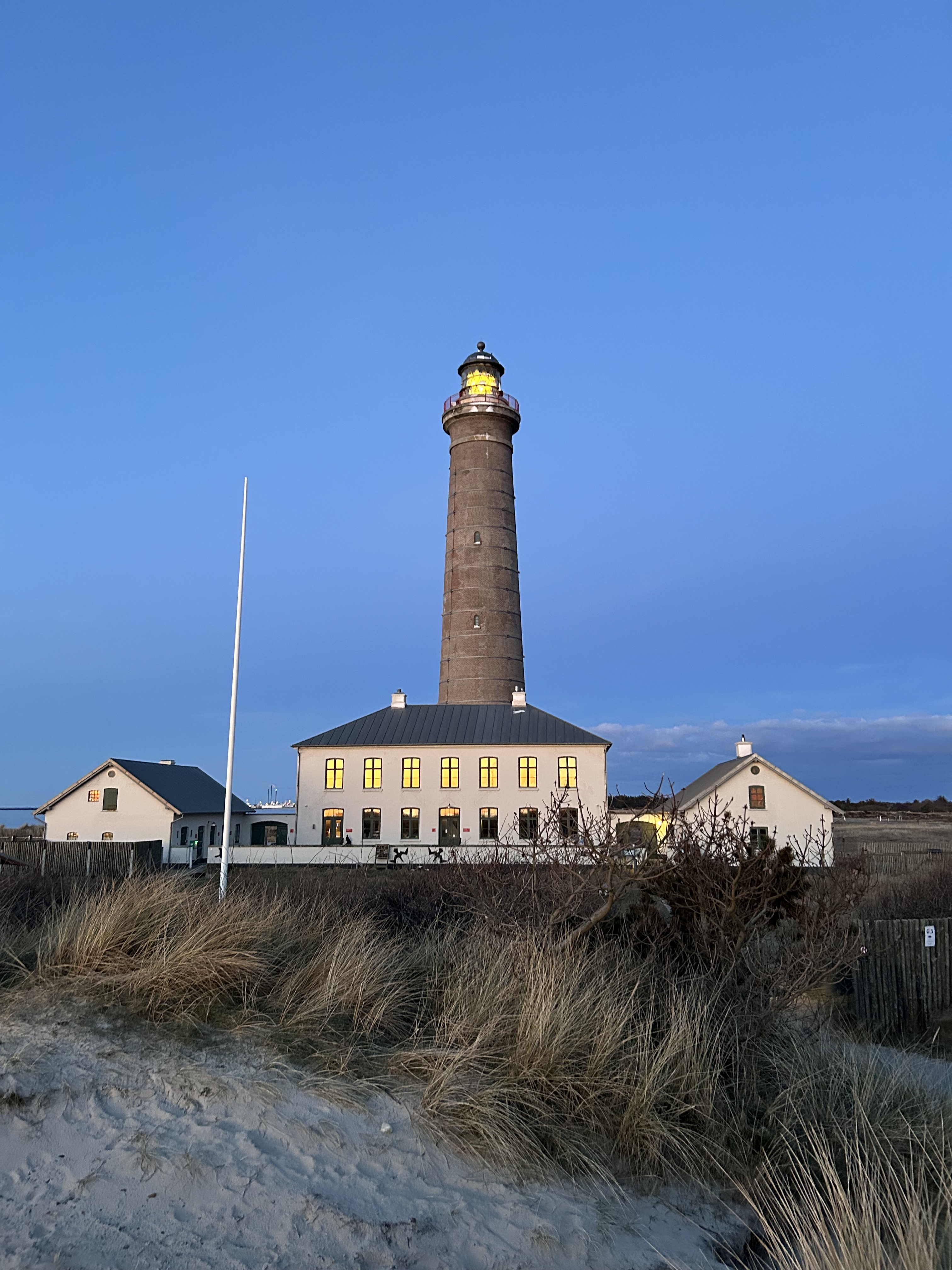
The remainder of the day was fairly slow. Isabella and Chris went into town to buy some groceries at the shops and go for an ice cream and the rest of us had a slow day around the station completing overdue tasks and dat entry as well as our weekly deep clean. In other news, our newly installed noctural flight call recorder has been installed and is now fully operational! We are very excited to see the results over the coming months!
And so, another day passes at Skagen Fuglestation. What will tomorrow bring? We will have to wait and see.
Ringing Highlights:
Kabeltromelen:
Rørspurv 1
Observation Highlights:
Glaucous Gull (Gråmåge) 1
Raptor migration in Skagen today
Today’s observations in Dofbasen from observers in the area
People: Lucas Corneliussen, Cora Köberle, Rasmus Matthiesen-Juhl, Christopher Moser-Purdy, Tue Baaner, Simon Sigaard Christiansen, Isabel Hunter, guests Marianne & Kurt.
Thank God It's Friday!!
Happy Friday!
Today was a fairly quiet day here at Skagen Fuglestation. We woke up to the sounds of the wind whistling past our windows but decided to see how ringing would go anyway. Before leaving, we said bye to Mara as she heads back to her studies. Tue, Lucas (who arrived back late last night), and I headed out to the ringing site but could only open 10 nets due to the weather. Despite our hopes we ended up catching 0 birds for the first time this season. We still were able to have a nice morning outside though. There were a lot of Chaffinches (Bogfinke) and Bramblings (Kvaekerfeinge) and Simon and I cut down a few more trees and now we have a beautiful view to spot birds from.
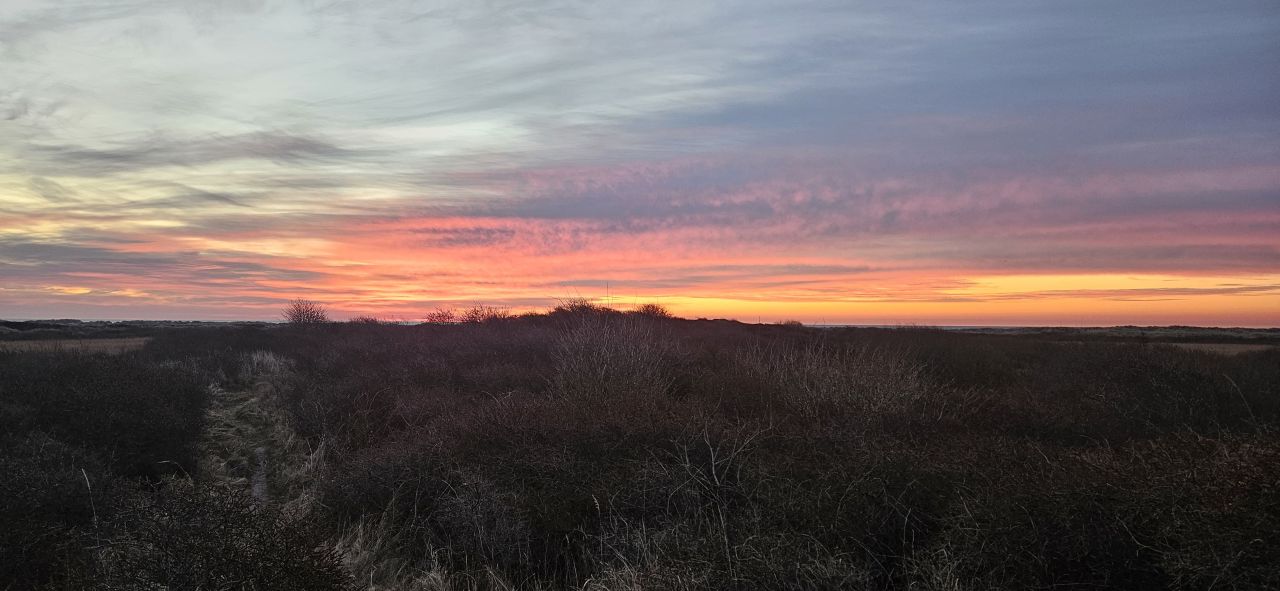
Sunrise from Kabeltromlen
The observers (Rasmus and Cora) headed to Nordstrand to count migrating birds this morning. There were a lot of Chaffinches (Bogfinke) and one 2nd calendar year Iceland Gull (Hvidvinge Måge). They headed to the Cormorant (Skarv) lake on the way back to monitor their breeding. They saw over 100 individuals. They also saw a Peregrine Falcon (Vandre Falk) on the way back.
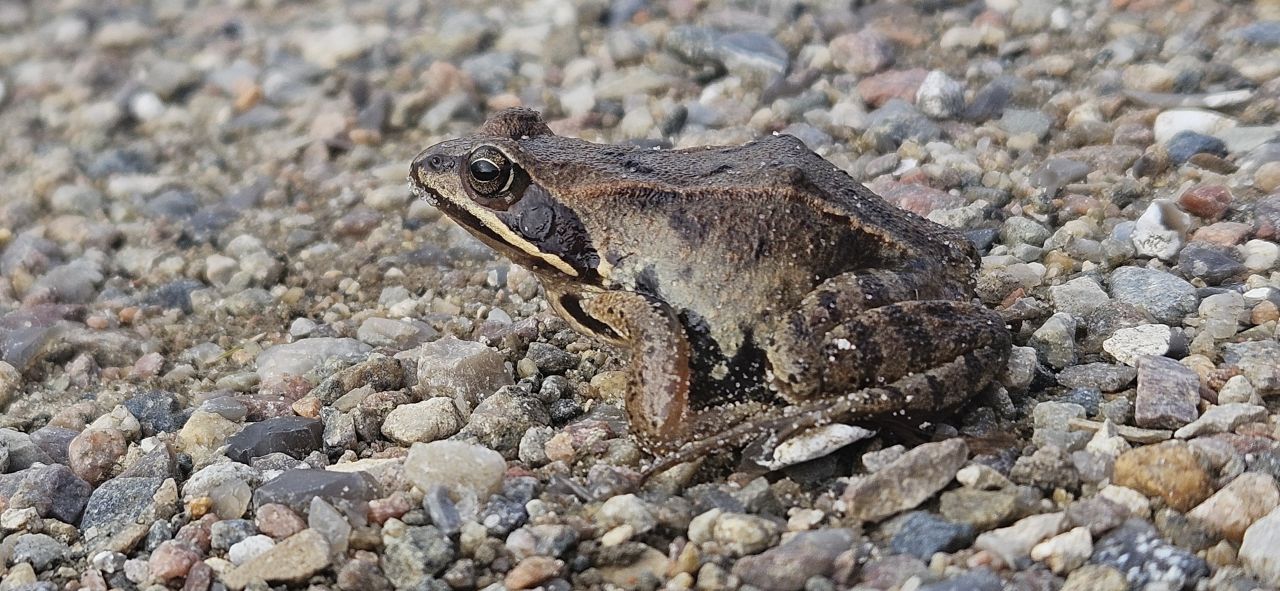
A nice froggy I saw today
We had a fairly lazy afternoon. No one was super motivated to brave the wind but Tue did make a heroic journey to Netto to buy ingredients for dinner. I spent some time crocheting, I’m working on a gull and hoping to have it finished before I leave on the 15th. My friend, Isabel, will also be arriving today for the weekend so I’m looking forward to that! Rasmus napped for maybe 4 hours. The weekend starts tomorrow and we’re hoping for at least one bird to hit the nets, the wind looks a bit better so we’ll see!
Ringing Highlights
Enjoying the great outdoors
Observation Highlights
Iceland Gull (Hvidvinge Måge) – 1
Peregrine Falcon (Vandre Falk) - 1
Raptor migration in Skagen today
Today’s observations in Dofbasen from observers in the area
People: Cora Köberle, Rasmus Matthiesen-Juhl, Christopher Moser-Purdy, Tue Baaner, Simon Sigaard Christiansen, Knud Pedersen, Isabel Hunter, guests Marianne & Kurt.
Den første Steppehøg
Hej allesammen.
Så gik endnu en dag med vilde oplevelser på Skagen Fuglestation. Den startede med en stille morgen på træk for Cora og Rasmus, på Grenen. Vi venter stadig spændt på, at det helt store træk melder sig. Det betyder dog ikke det helt store, da der skete en masse andet, der virkelig satte sit præg på dagen. Årets første Steppehøg meldte sig i dag, en flot adult han på vej mod nordøst. Denne observationen er den tidligste på Grenen nogensinde og det næst-tidligste fund i området for den gamle Skagen Kommune. Tidligste er her fra 2/4 2017 på Hulsig Hede.
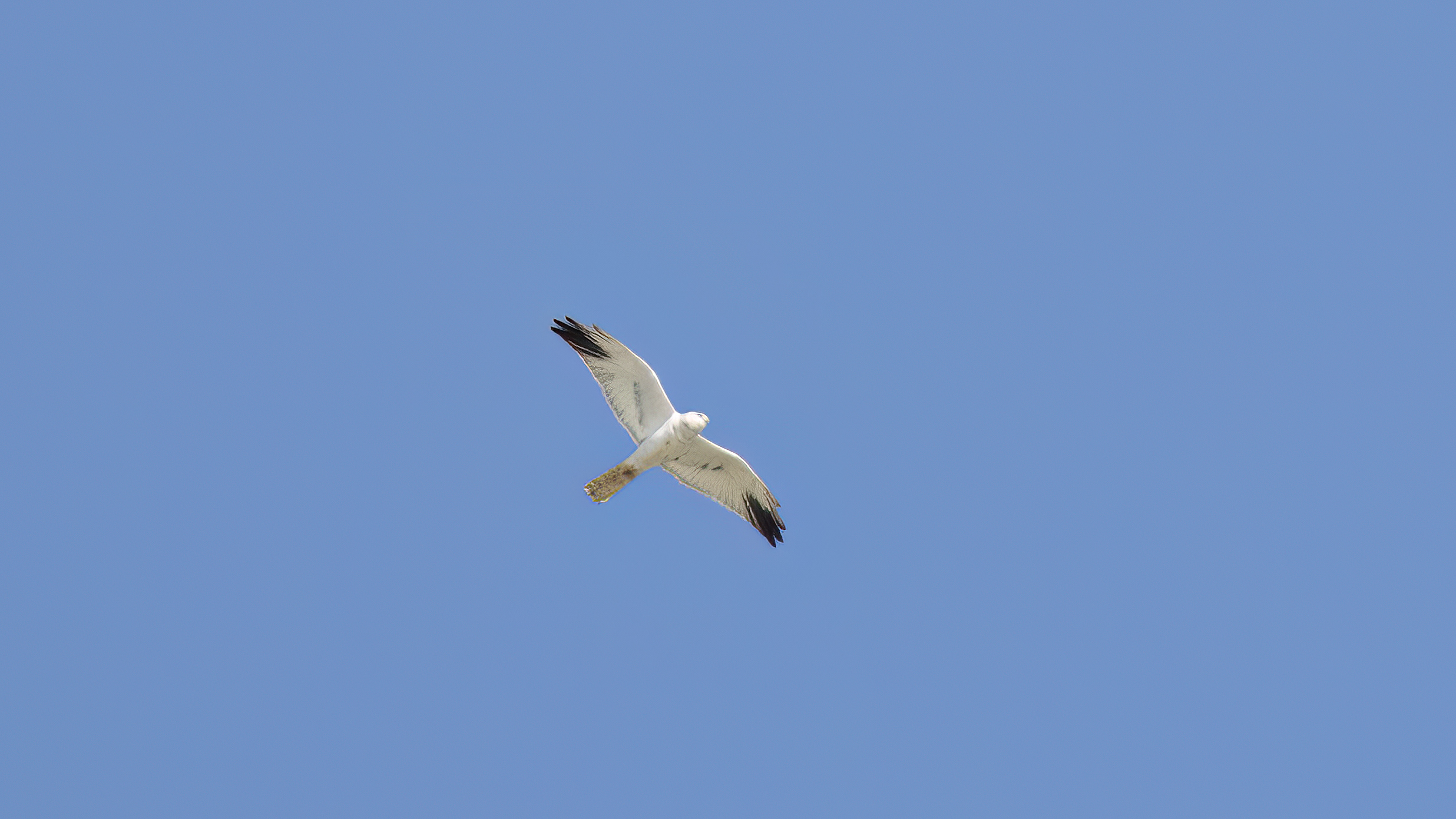 Steppehøg (Foto: Knud Pedersen)
Steppehøg (Foto: Knud Pedersen)
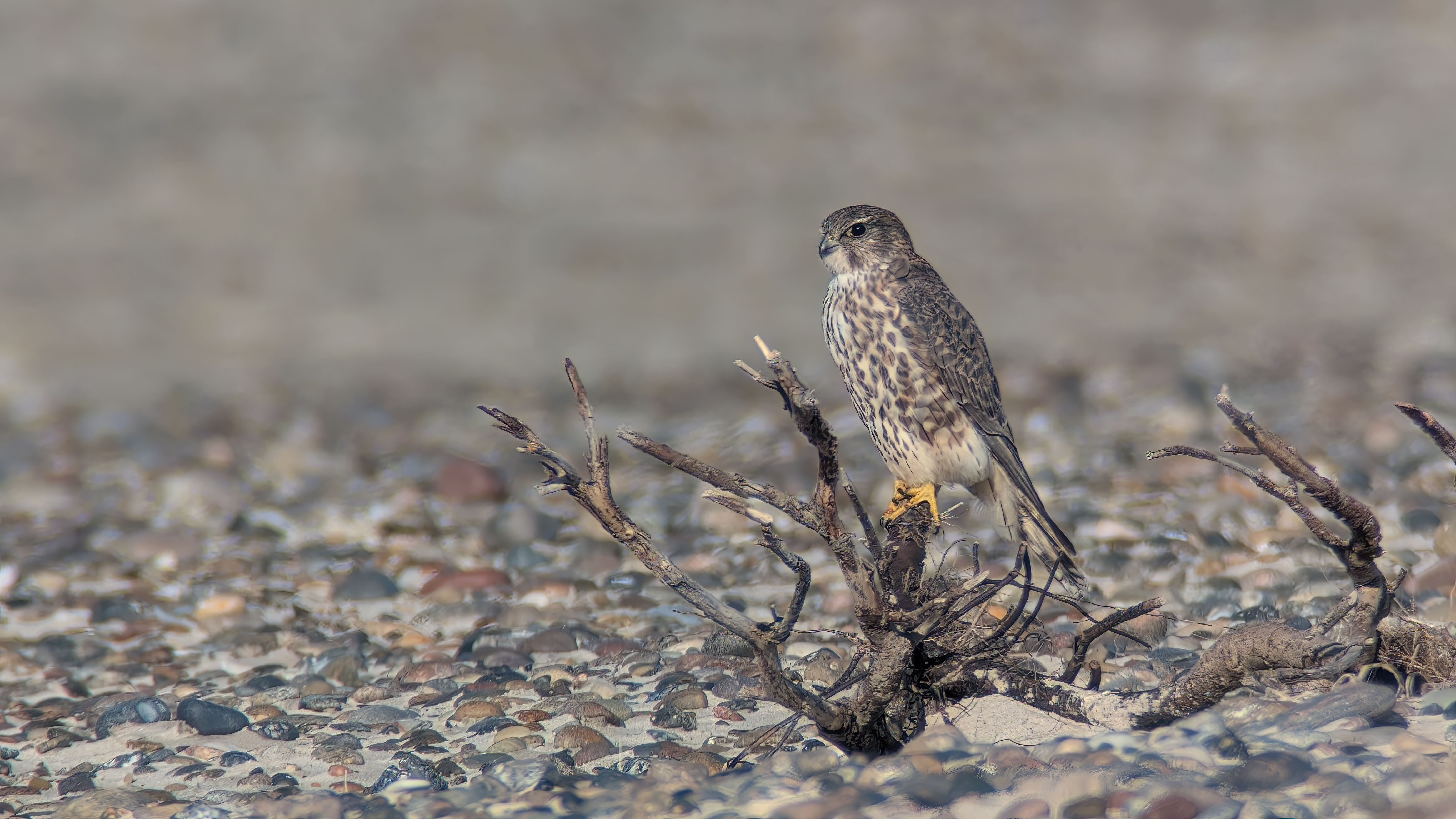 Dværgfalk adult hun (Foto: Knud Pedersen)
Dværgfalk adult hun (Foto: Knud Pedersen)
Derudover bød dagen også på en fiskeørn og en stor tornskade. De to kongeederfugle, samt gråmågen opholder sig her også stadig. Alt i alt gik morgenen med et par fantastiske timer i klitterne, med rigeligt spændende at kigge på for Cora og Rasmus.
Mara, Chris og jeg havde også en super morgen ved Kabeltromlens ringmærkning. Vi endte med 48 mærkede fugle i alt. Højdepunkterne var en træløber og gulspurv. Derudover var vi tæt på at få en spurvehøg i nettet, så det fik virkelig adrenalinen til at pumpe. På vej ud til klitterne var vi også heldige at se en ugle (Mosehorn eller Skovhorn) flyve over vejen. Vi regner med, at det var mosehornugle, men det var desværre ret mørkt. Det blev til en fantastisk dag i solen, med god aktivitet, mere kan man vist ikke forlange. Magnus Houen Lauritsen, som var assistent her sidste år kom forbi og hilste på med kage. Mens vi var på runde så han og Simon en smuk Sørgekåbe flyve forbi.
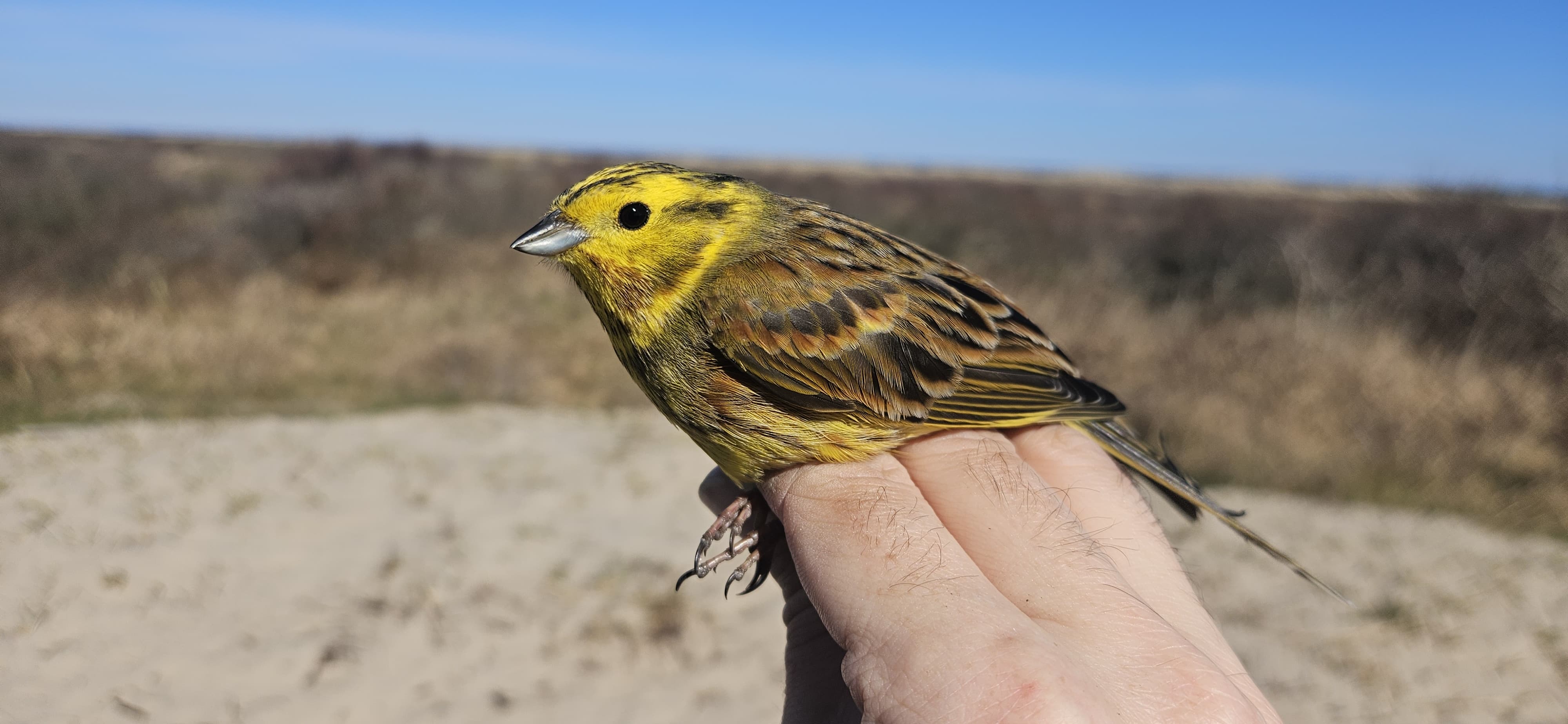
Gulspurv
Simon ledte en tur for et hold gymnasieelever der både besøgte ringmærkningen og observatørerne denne morgen. Her blev de undervist i metoder til fugleovervågning
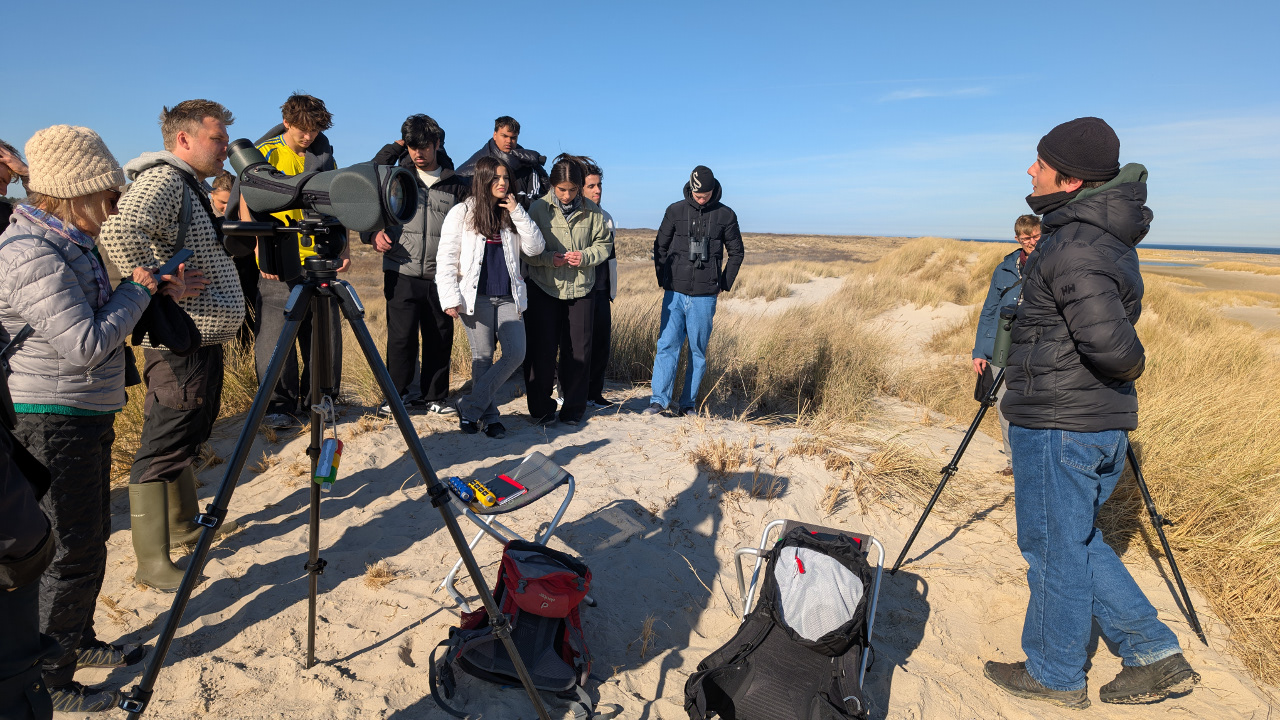 Undervisning af gymnasieelever (Foto: Knud Pedersen)
Undervisning af gymnasieelever (Foto: Knud Pedersen)
Efter en succesfuld morgen var vi alle klar til at komme tilbage til stationen for at slappe lidt af. Det blev der dog ikke meget af, da Rasmus med det samme ringede omkring en delfin (øresvin), som kunne ses ude foran fyret. Vi kom afsted, og var heldige at få et rigtigt fint kig på det fantastiske dyr. På vej tilbage opdagede Cora, at to fugle fløj rundt oppe omkring linsen i fyrtårnet. Vi ved stadig ikke helt hvordan de endte der, så afsted gik det for Cora og Mara, som hurtigt fik dem indfanget. Det viste sig at være en super fin husrødstjert og en rødhals. De to fugle fik ring på, og efter billeder af husrødstjerten, kom de begge videre i god behold. Dejligt også at kunne hjælpe fuglene lidt.
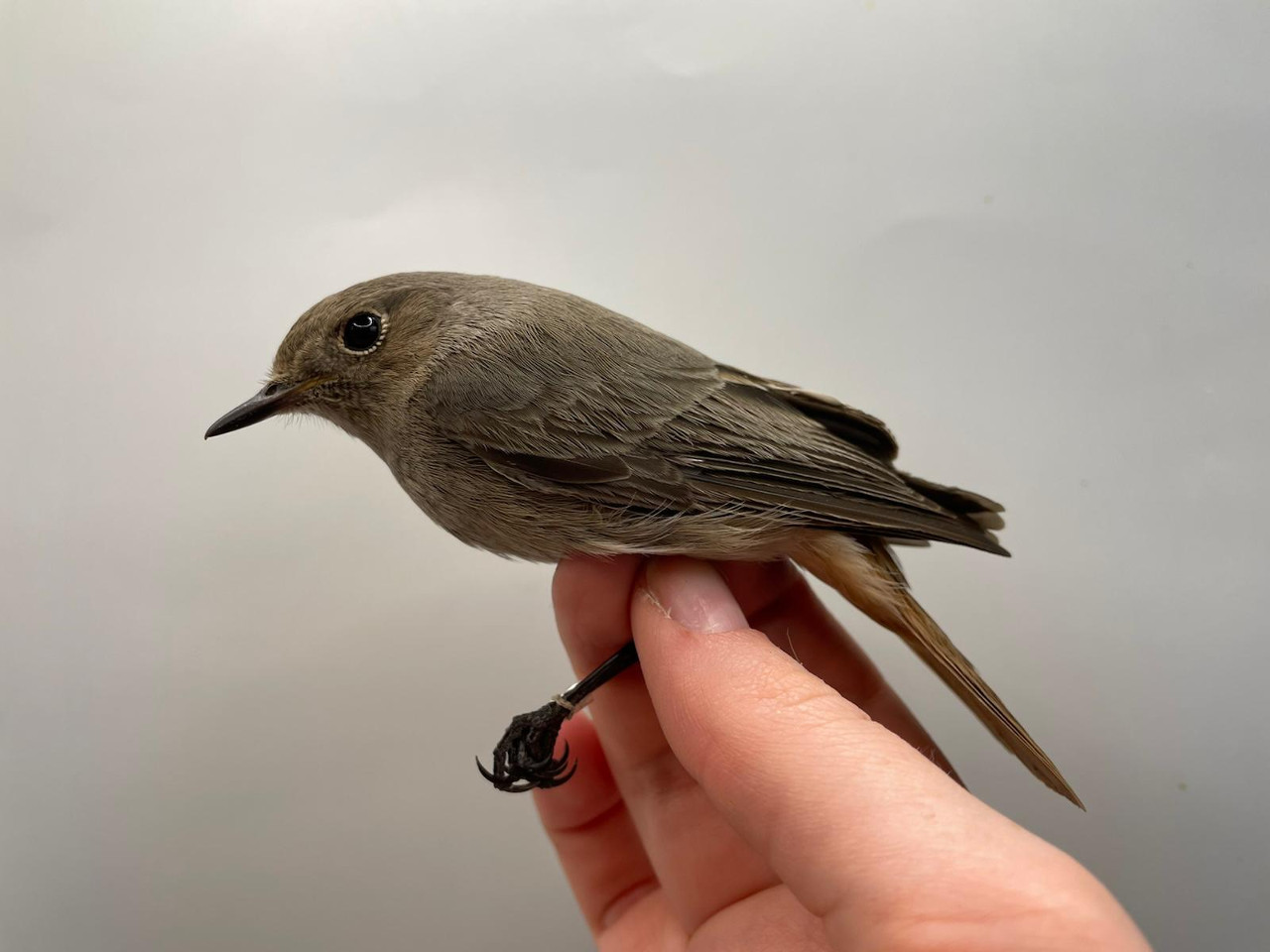 Husrødstjert
Husrødstjert
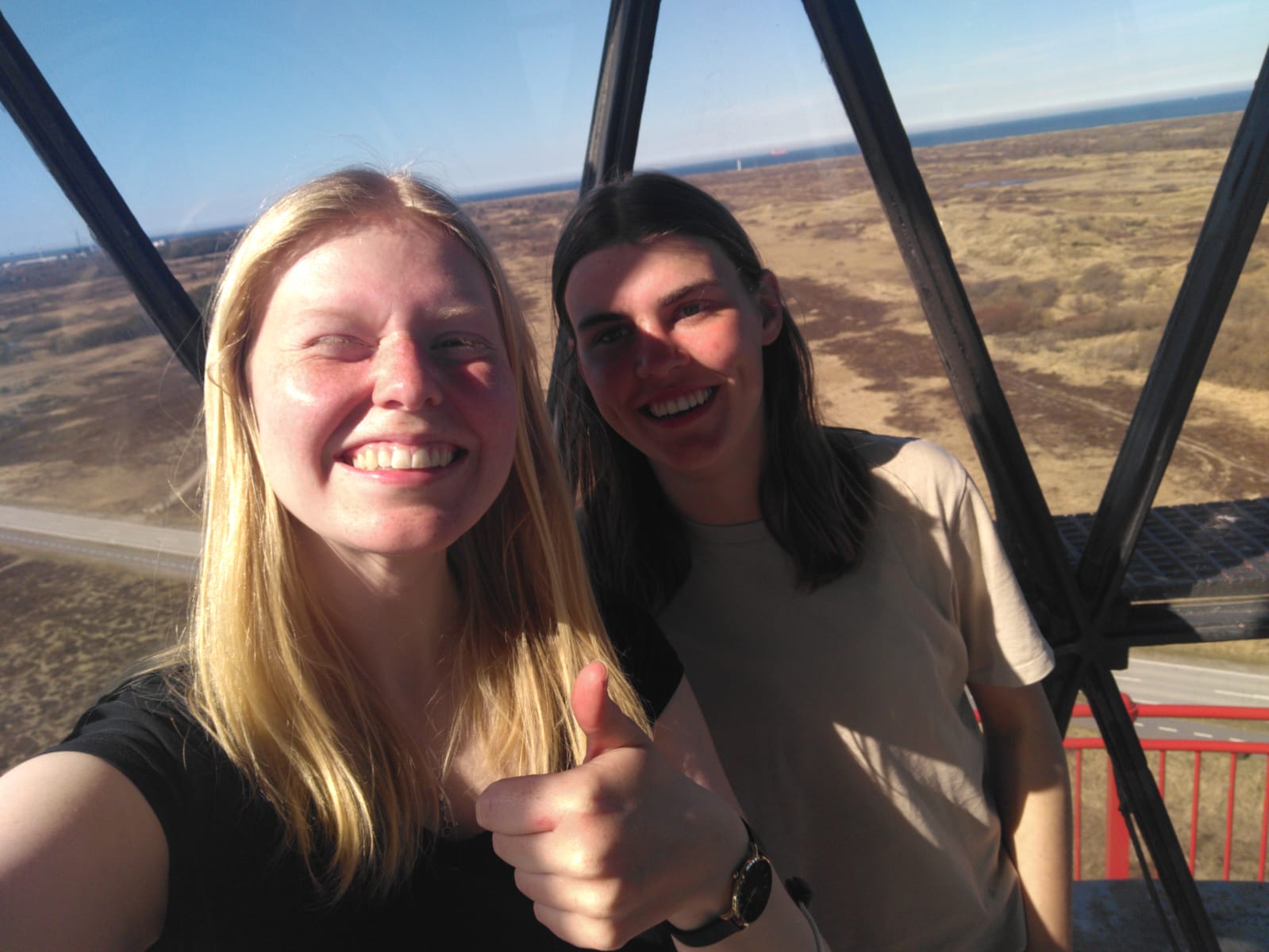
Mara og Cora på redningsaktion i toppen af fyret
Fuglevelgørenheden stoppede dog ikke her, Simon havde fået besked om, at de nede i Jerup ved vildtplejestationen, havde modtaget en gråkrage, som snart var klar til at komme ud igen, men den skulle da lige have ring på inden. Det kunne vi heldigvis snildt klare, og efter at ringen kom på fik vi lov til at se alle de andre dyr, som også opholdte sig der. Vi siger tak fordi vi måtte komme forbi.
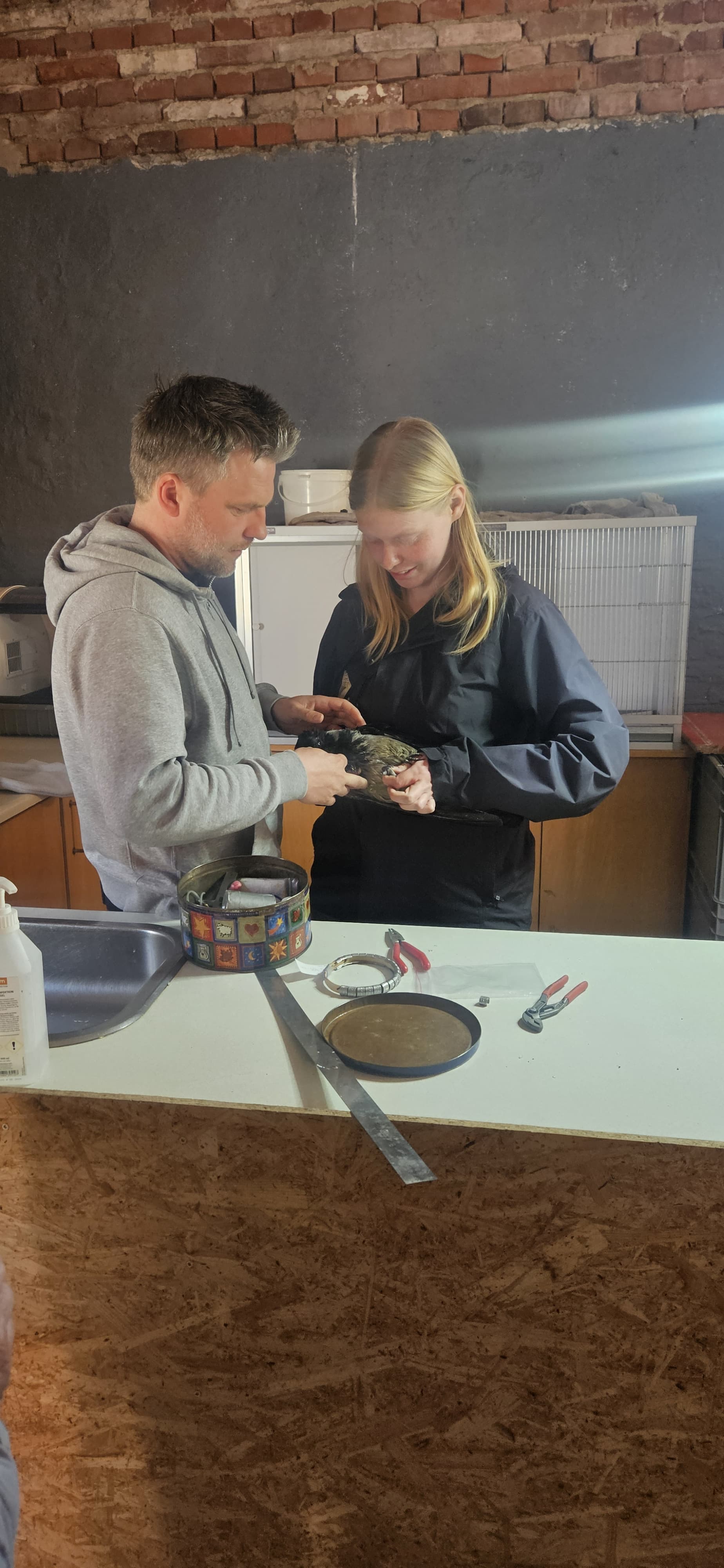
Ringmærkning af gråkrage
På vej hjem kørte vi forbi Jerup Strand, hvor vi gjorde stop for at kigge lidt. Her så vi bl.a. skestork, blå kærhøg, spidsand, rødben og to klyder, slet ikke dårligt for et lille stop på turen.
Efter hjemkomst havde Mara et oplæg for resten af os på stationen omhandlende statistik af ringmærkningsdata fra Kabeltromlen, hvilket var rigtig spændende. Det bliver desuden afslutningen på Maras ophold i denne omgang i det hun drager hjem til studierne i Tyskland.
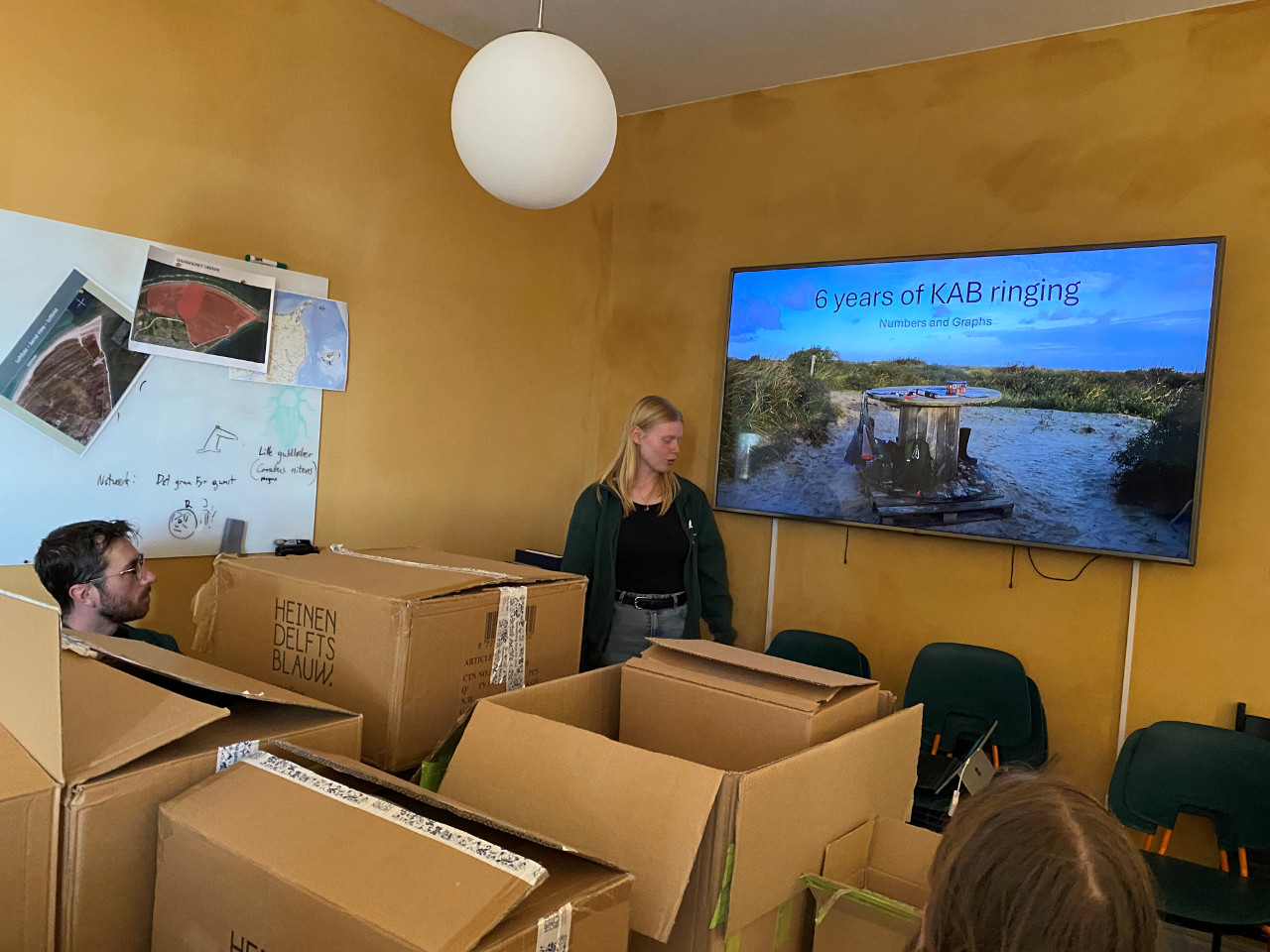 Mara holder oplæg mellem en masse flyttekasser på Naturstyrelsens kontor
Mara holder oplæg mellem en masse flyttekasser på Naturstyrelsens kontor
Vi er klar til endnu en fed dag i morgen.
Highlights from the observations:
Steppehøg 1
Gråmåge 1
Kongeedderfugl 2
Stor tornskade 1
Highlights Jerup strand:
Skestork 1
Klyde 2
Ringing (Kabeltromlen):
Gransanger 8
Fuglekonge 7
Træløber 1
Rødhals 18
Gærdesmutte 2
Jernspurv 3
Blåmejse 2
Musvit 1
Gulspurv 1
Vindrossel 3
Sangdrossel 1
Solsort 1
Total = 48
Ringing (Det Grå Fyr):
Rødhals 1
Husrødstjert 1
Raptor migration in Skagen today
Today’s observations in Dofbasen from observers in the area
People: Cora Köberle, Mara Glane, Rasmus Matthiesen-Juhl, Christopher Moser-Purdy, Tue Baaner, Simon Sigaard Christiansen, Knud Pedersen, Magnus Hoen Lauritsen, gæsterne Marianne & Kurt.
Blå Glente!!!
Halløj derude
Igen i dag havde jeg fornøjelsen af at tælle trækket på Grenen, sammen med Cora, Tue og Knud. Det gik hurtigt op for os, at der desværre ikke var meget træk i fuglene derude igen. Jeg brugte derfor noget af morgenen på at gennemgå alle sortænderne, i håbet om en Amerikansk Sortand eller en Brilleand. Jeg klikkede 3360 rastende sortænder, hvilket er nok til at man får ondt i tommelfingeren, kan jeg hilse at sige. Vi så igen i dag de to kongeederfugle, og en 2k Gråmåge.
Da den standardiserede obs, var ved at være slut for jeg øje på en smal kærhøg-lignende fugl der trækker ud højt over os, og får hurtigt sagt til Knud at han lige skal tjekke den, og imens jeg træder to skridt tilbage for at kunne se fuglen bedre, hører jeg Knud råbe “BLÅ GLENTE”. Jeg får hurtigt råbt til andre ornitologer på klitten 50 meter fra os, at de skal kigge højt over Grenen. Min første Blå Glente nogensinde, og så får jeg endda lov til selv at finde den:) Det var dælme en stor oplevelse! Se lige de her fantastiske billeder Knud fik i kassen under stort pres:)
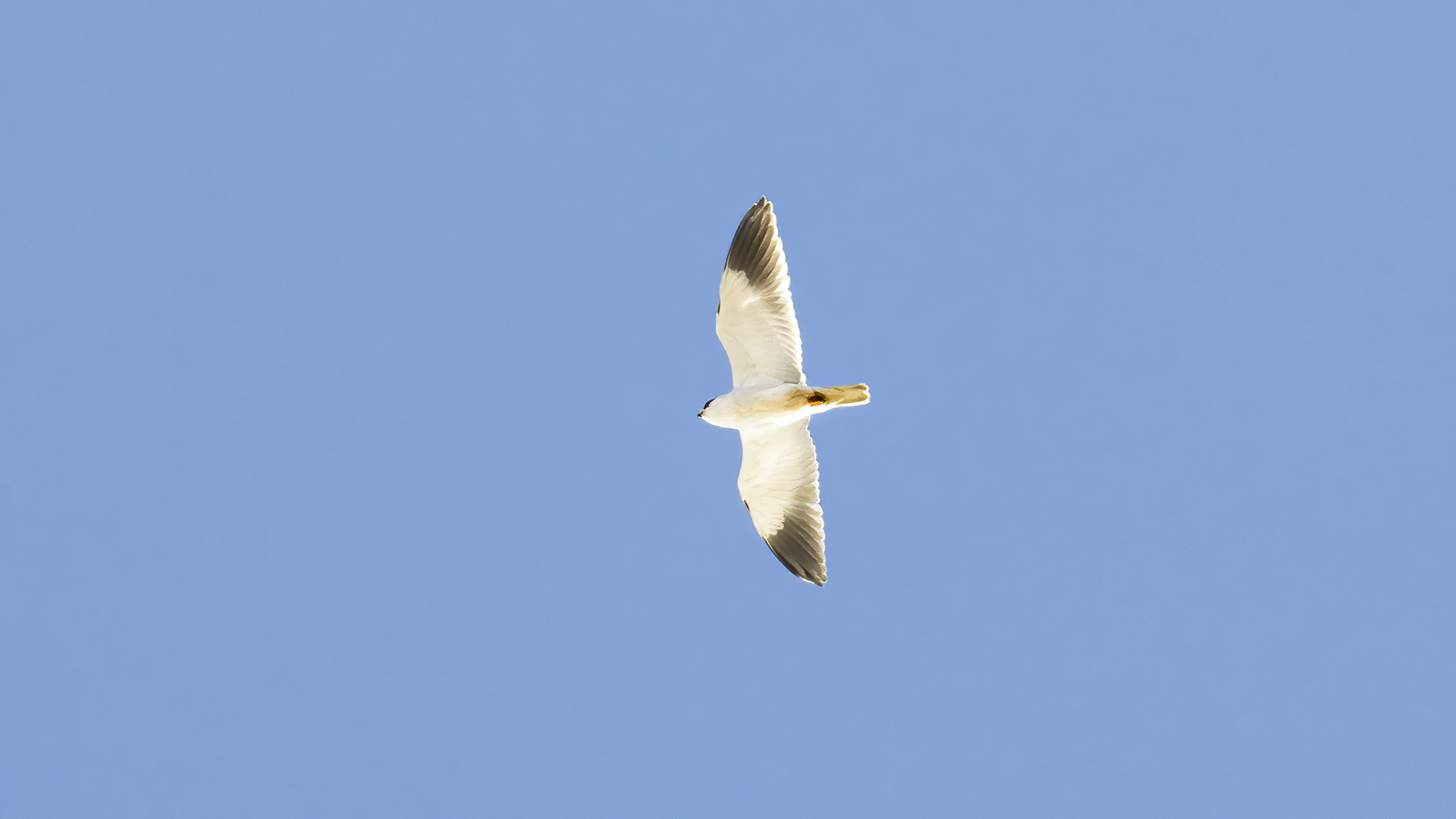
Foto: Knud Pedersen
Johnny Laursen, kendt fra Fasan æder ligaen (FÆL), meldte 2 timer senere en blå glente der trak over flagbakken i stor højde. Vi kunne desværre ikke se den fra Storsig. Så 1, måske 2 blå glenter i Skagen i dag. VILDT!
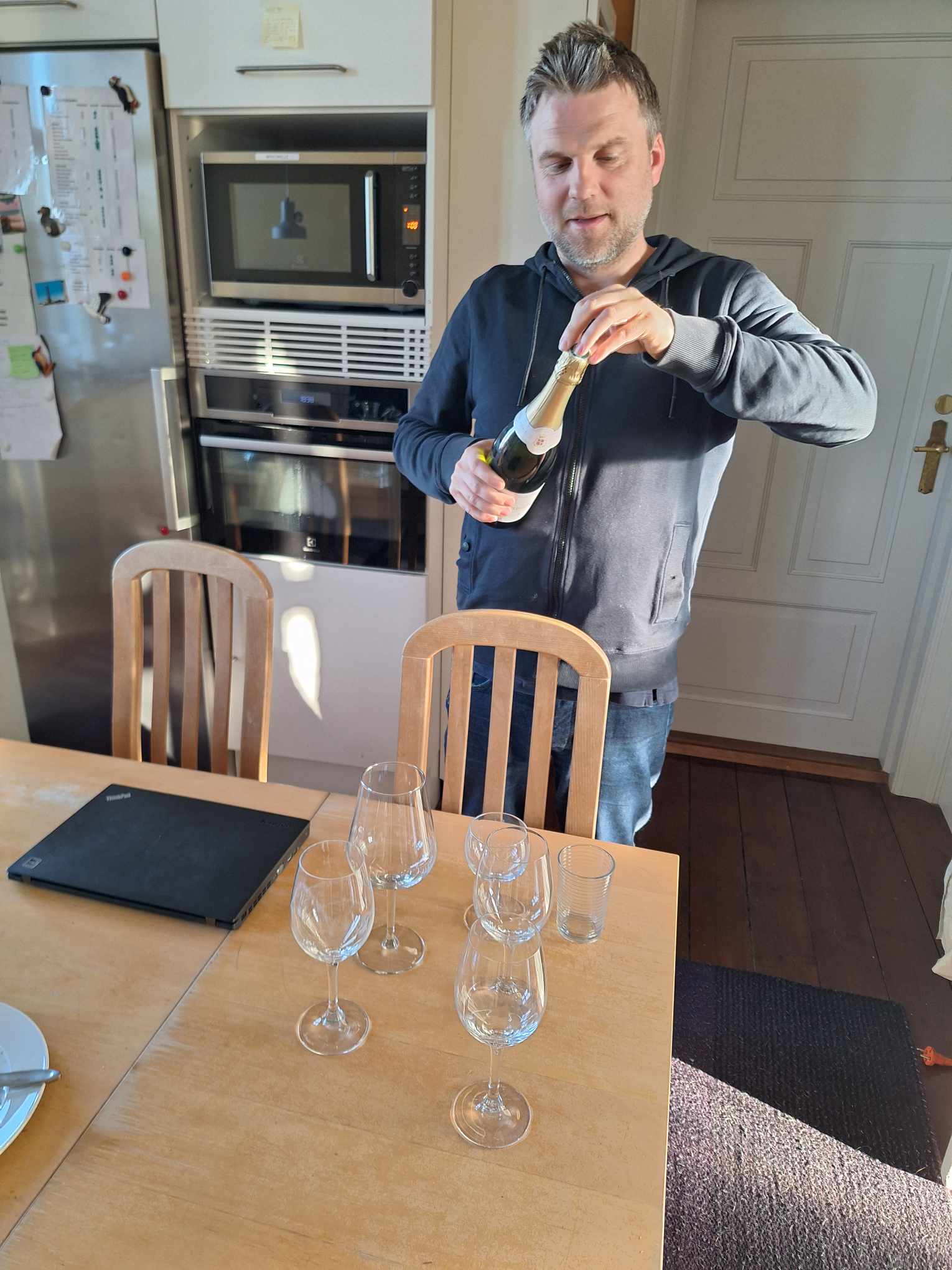
Simon havde købt champagne i anledningen af den Blå Glente:)
Også hos ringmærkerne var der travlt i morges, med 52 fugle i nettene. Det er vores bedste dag i sæsonen indtil videre! Mange Rødhalse, og en flot Vindrossel fandt bla. vej til nettet i dag
Senere på dagen forsøgte Cora, Mara og jeg os med fangst af Sortstrubet Bynkefugl. Vi havde slået to net op, og en fælde med melorme. Vi fangede i løbet af dagen mange rødhalse, en enkelt gransanger, og på sidste runde klokken 20.45, sad der en adult han Sortstrubet Bynkefugl i nettet. Det var virkelig en fed fugl, og jeg fik lov til at ringmærke den:)
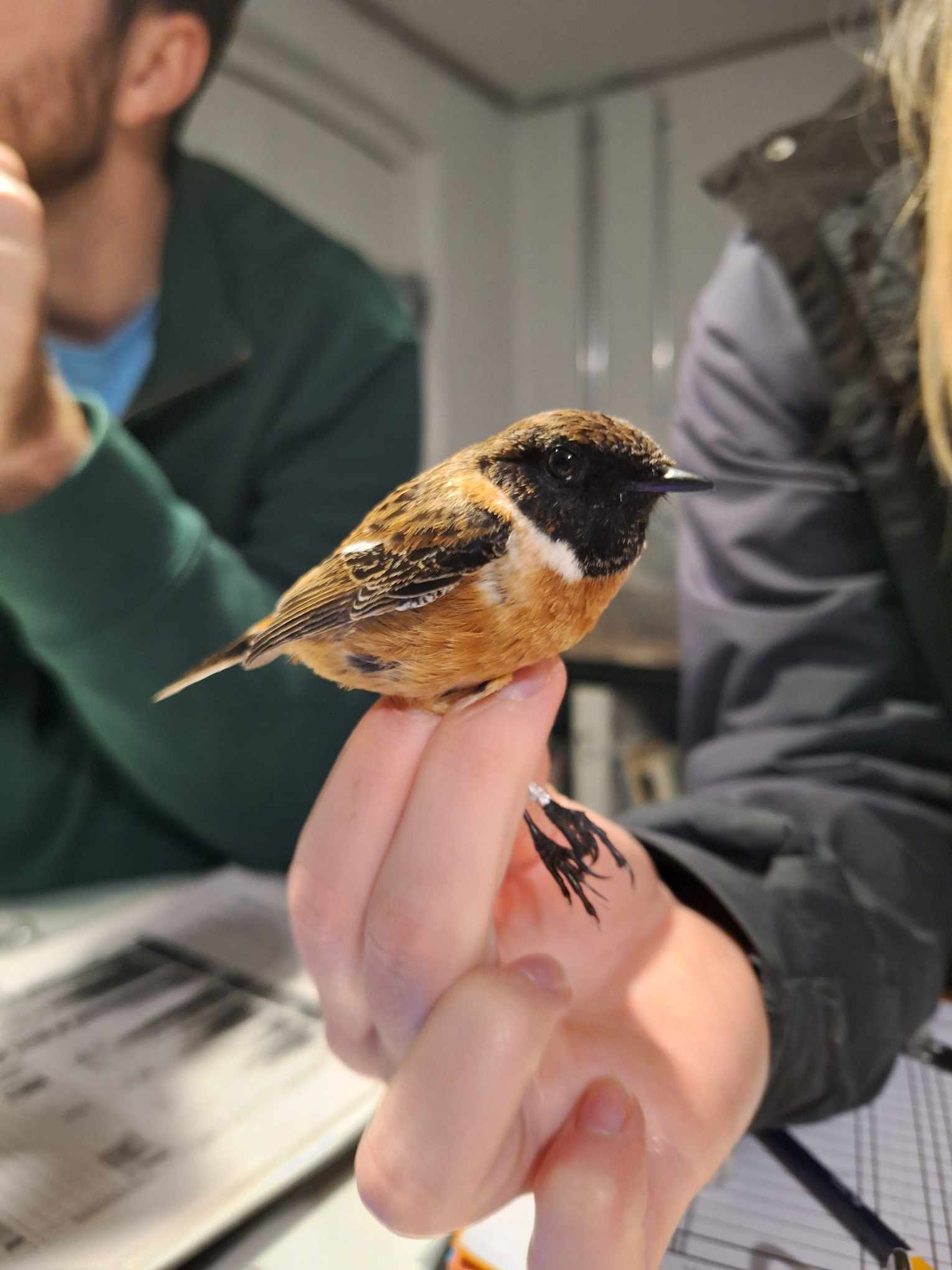
Sortstrubet Bynkefugl, 3k+ han
Tue og Chris var på mallemuk-vandring, i formiddags, mellem Gammel Skagen og Grenen, men fandt ingen døde mallemukker, hvilket jo er positivt.
Alt i alt en fuldstændig fantastisk dag i Skagen!
Vi ses derude!
Highlights fra dagen:
BLÅ GLENTE!!!!
Gråmåge
Kongeederfugl (2)
Ringmærkede fugle: Kabeltromlen
Gærdesmutte (7)
Rødhals (29)
Solsort (1)
Vindrossel (1)
Gransanger (4)
Fuglekonge (8)
Rørspurv (2)
I alt: 52
Raptor migration in Skagen today
Today’s observations in Dofbasen from observers in the area
People: Cora Köberle, Mara Glane, Rasmus Matthiesen-Juhl, Christopher Moser-Purdy, Tue Baaner, Simon Sigaard Christiansen, Knud Pedersen
Sperm Whale?!
Hej!
Finally, the temperatures are rising and so are the chances for catching birds. Chris and I had a very cozy time in the sun and almost no wind at Kabeltomlen, not freezing anymore. Every round to check the nets resulted in some birds, so we were always busy ringing them. Most of them were Robins (Rødhals) and Chiffchaffs (Gransanger), but we also caught an adult female Yellowhammer (Gulspurv), that was ringed in 2023!
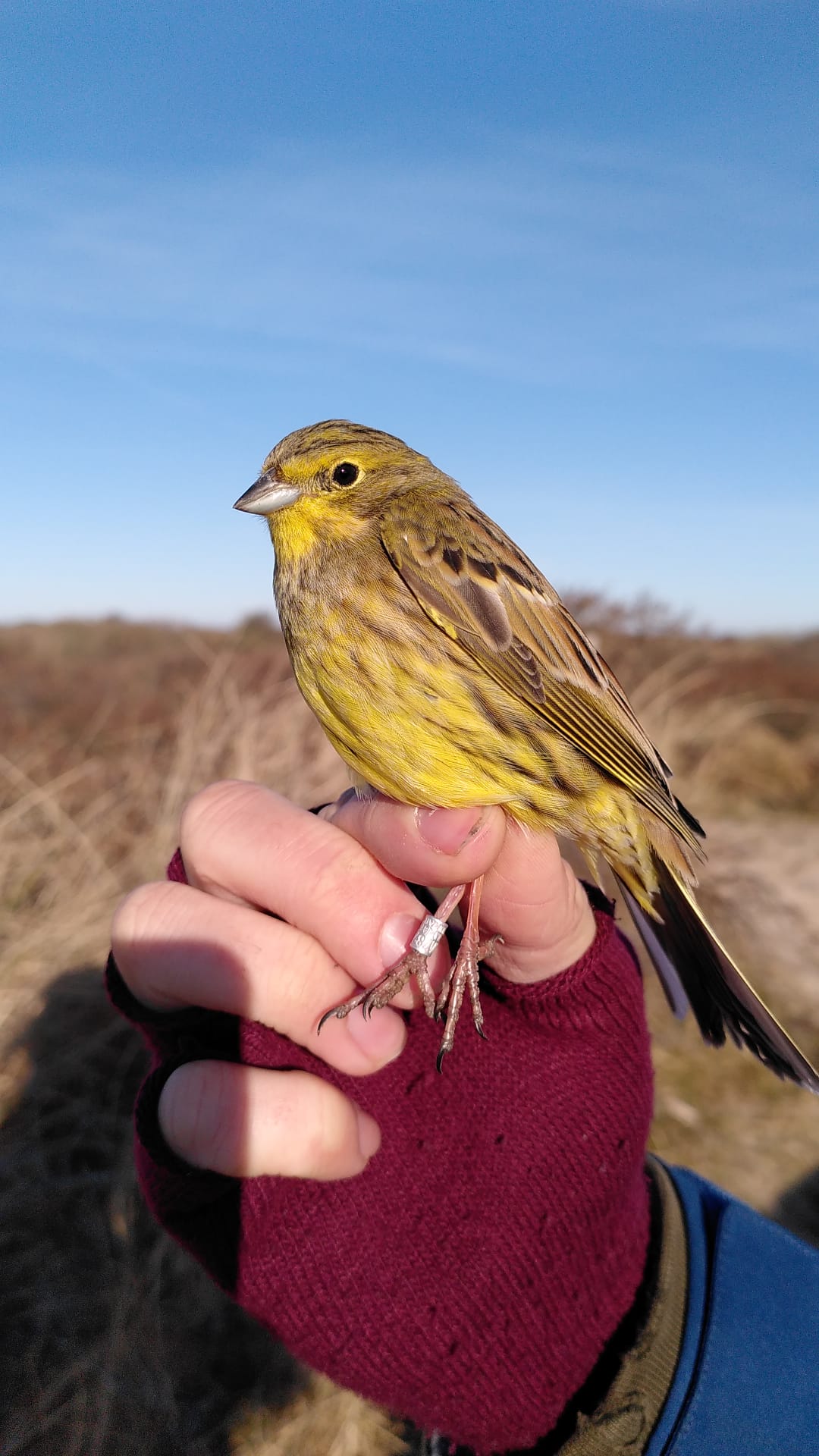
Recapture Yellowhammer (Gulspurv)
In total, it was a very successfull ringing day and it continued in the lighthouse garden after lunch with two additional Goldcrests (Fuglekonge). One profesionally ringed by Rasmus, who wants to get back into practice after not holding a bird for almost 4 years. The observers on the other hand had a rather slow day, with not much migration going on. They saw the King Eiders (Kongeederfugl), and the Glaucous Gulls (Gråmåge) again and also spotted 8 Shags (Topskarv). We also had to say goodbye to Janna this morning. She went out observing and on her way back to the lighthouse rang some birds and then had to leave to get the train back to Hamburg. We had such a great time with you!
Back at the station Simon came to pick us up for a very special mission, for which we needed to dress up a bit. South of Skagen a Sperm Whale (Kaskelothval) was washed up on the beach and we were asked to help remove it, so they could bring it to an ocean museum. This sounded just like the task volunteers from a bird observatory are made to do!
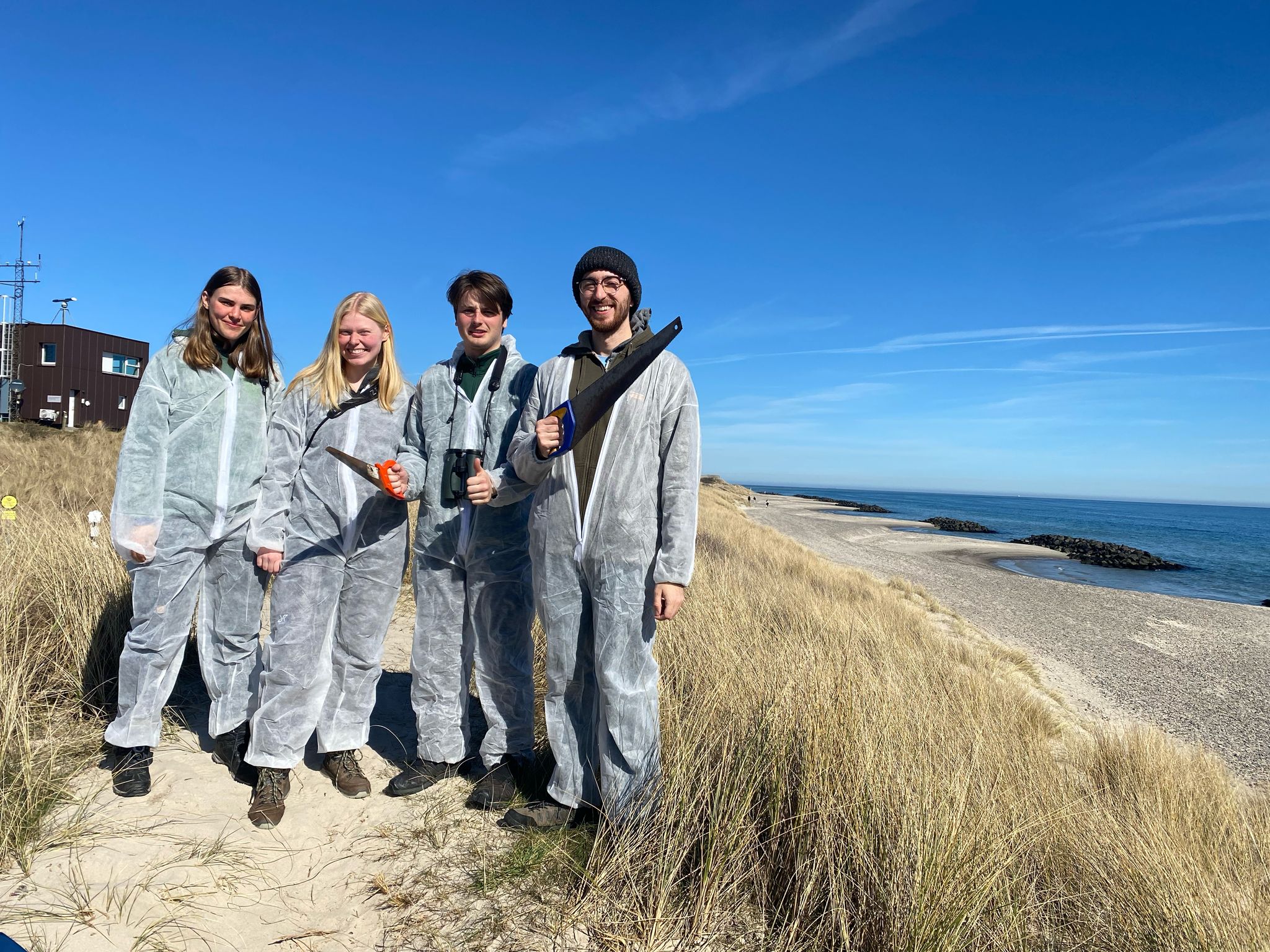
Versitile Volunteers
Latest after we saw the tiny saws, Simon packed as additional tools for the job, we suspected that something was not right. And yes, of course this was one of Simons april fools jokes! So no whale, but a lot of fun.
Later in the afternoon we went to pick up Tue from the train station and welcomed him to the team. He will stay here until Summer. After that the rest of the day went by in a second and the evening was lit by a very beautiful sunrise. We all are full of hope for a lot of birds (in the air and in the nets) tomorrow!
Highlights from the observations:
Gråmåge 2
Kongeedderfugl 2
Topskarv 8
Ringing (Kabeltromlen):
Gærdesmutte - 4
Rødhals - 6
Gransanger - 7
Fuglekonge - 2
Rørspurv - 1
Total = 22
Ringing (Det Grå Fyr):
Fuglekonge -2
Raptor migration in Skagen today
Today’s observations in Dofbasen from observers in the area
People: Cora Köberle, Janna Ouedraogo, Mara Glane, Rasmus Matthiesen-Juhl, Christopher Moser-Purdy, Tue Baaner
En hyggelit aften med Snobrød
Today we could all sleep a little longer. Because we got an extra hour of sleep with the time change.
Rasmus Olli and I went to world's end 3 to do the migration count. Because of the north wind, migration was quite slow this morning. But we found a nice Merlin (Dværgfalk) hunting on the Beach. There were many Gulls at world's end 3 today. Among them were two(!) Glaucous Gulls (Gråmåge). Rasmus even managed to see them at once in one scopeview. When I checked the inland I saw a big flock of 16 Bearded Reedlings (Skægmejse) flying around of Kabeltromlen. Also the ringers could watch them really nicely. They had a nice ringing day today and catched some birds every round.
After lunch Janna, Mara, Rasmus and I went to Skagen to do some shopping. But first we went to the harbour. There we saw some beautiful Black Guillemots (Teiste) in summer plumage.
chacking the harbour
When we came back we said goodbye to Olli who went back to Aalborg. After that I baked an Apfelstrudel (kind of Apple Cake). Janna packed up her things because she will leave tomorrow and the others went out to collect some wood for a campfire. Later I went on a little walk, thereby I was able to observe some singing Moor Frogs (Spidssnudetfrøe), which have now started mating.
When I came back the campfire was already well burning and Janna had prepared a Noodle salad and dough for Stickbread. We had a very hyggelig evening at the campfire with delicious Stickbread.
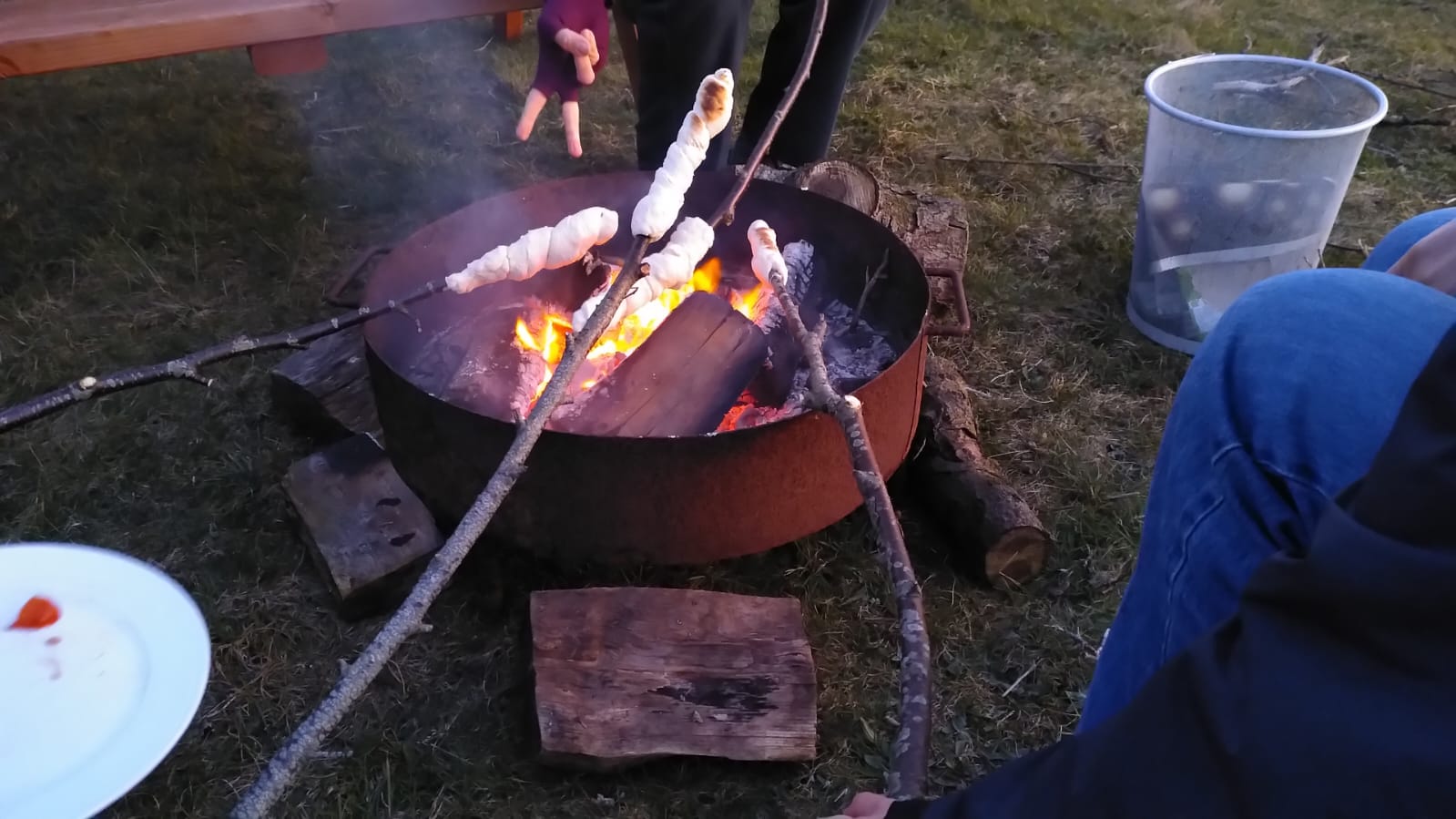
Our hyggelit campfire
Highlights of the observations:
Gråmåge 2
Bjergirisk 1
Skægmejse 16
Dærgkfalk 1
Ringing (Kabeltromlen):
Gransanger-2
Rødhals-4
Gædesmutte-2
Fuglekonge-4
Total: 12
Ringing (Jennes Sø, Michael Ancher)
Gægesmutte-1
Ringing (Nordstjernevej, Michael Ancher)
Rødhals-1
Raptor migration in Skagen today
Today’s observations in Dofbasen from observers in the area
People: Cora Köberle, Janna Ouedraogo, Mara Glane, Rasmus Matthiesen-Juhl, Christopher Moser-Purdy and Olli Lilja
Regn og blæst
Det barske vejr tillod desværre ikke ringmærkning eller observationer på Grenen i dag. Klokken 08.00 kunne vi se på radaren, at der kom et hul i regnvejret. Det udnyttede Janna, min fader og jeg prompte. Vi gik en tur ud langs Sardinkrattet og Sylviastien, og gjorde et stop ved Kabeltromlen, da solen pludselig tittede frem. Det resulterede i forbløffende mange fugle. To Små Skalleslugere lettede fra Skarvsøen, 12 Spurvehøge trak mod nordøst, og både Rørhøg og Blå kærhøg fouragerede over Grenen. Til sidst fik vi også set Gråmågen, der fløj nordvest langs stranden mod Nordstrand, samt en trækkende Dværgfalk. Efter en halv times tid, gik vi videre gennem Ellekrattet, op på Kapgadagung, og tilbage over Storsig, hvor vi så endnu en Blå kærhøg på jagt efter føde.
Klokken 13.00 drog min far tilbage til Grenå efter en “fremragende weekend i Skagen”. Jeg trøstespiste en Yankie bar han havde efterladt, tog et varmt bad, og begyndte, med Bob Dylan i ørerne, så at indtaste alt den data jeg mangler at få på DOFBasen fra weekenden. Midt under “The Times Are A-Changing” bankede det på døren, og jeg blev overrasket med nybagte brownies som Christopher havde bagt. LÆKKERT!
Hertil aften holdte Janna en session om sammenhængen mellem klimaforandringer og fugletræk, med udgangspunkt i Broget Fluesnapper. Det var virkelig spændende!
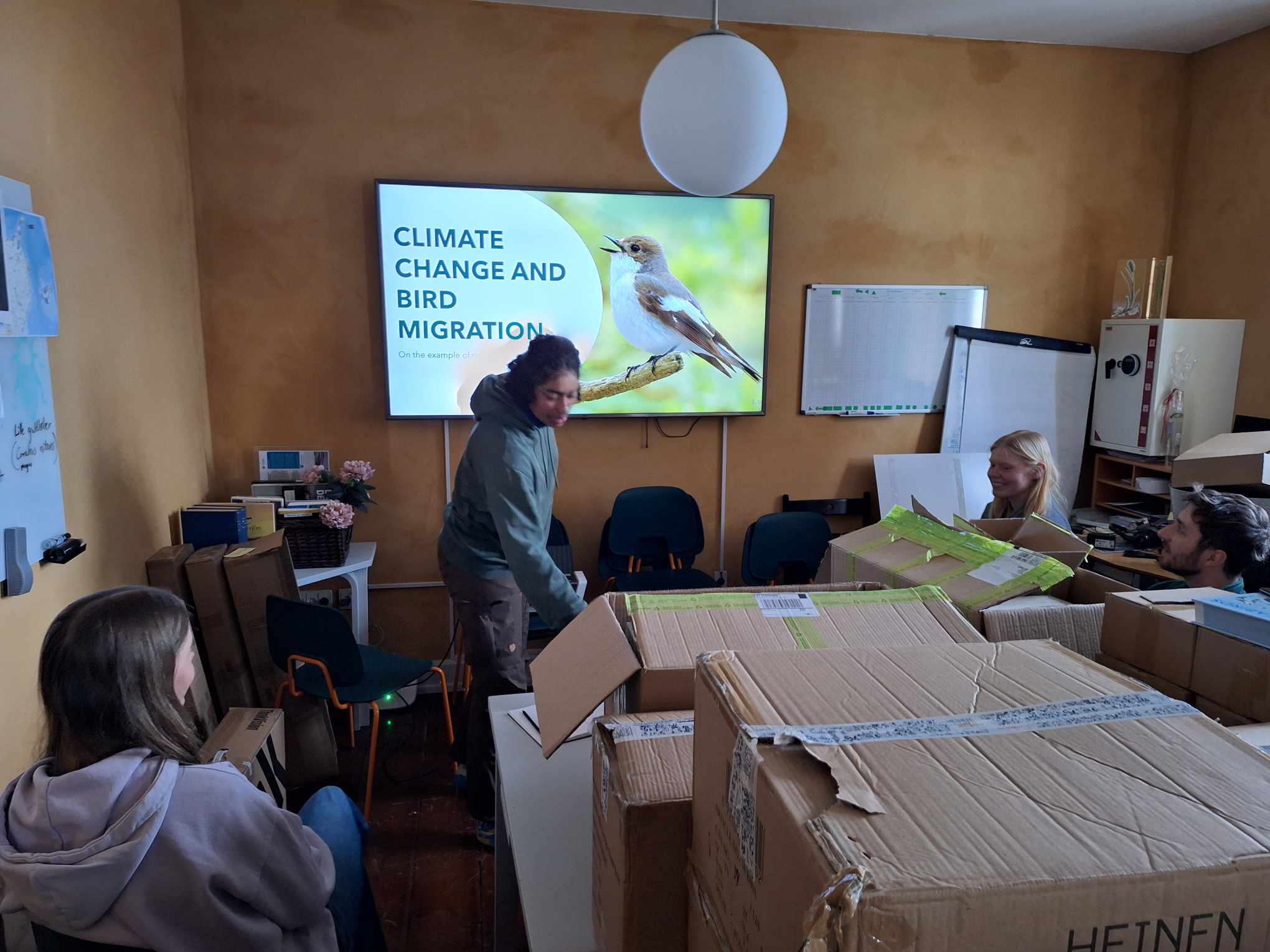
Nu skal jeg i gang med Raptor summary fra de sidste par dage, det fik jeg vist nok lovet Lucas at jeg havde færdigt inden han kommer tilbage på stationen:)
Vi håber på bedre vejr i morgen!
Vi ses derude:)
Highlights fra dagen:
Lille skallesluger (2)
Gråmåge
Ringmærkning: Nordstjernevej
Gransanger (1)
Topmejse (1)
Sum of the Raptors in the area based on observations typed into Dofbasen.
Link to todays observations in Dofbasen from the Skagen area
People: Cora Köberle, Janna Ouedraogo, Mara Glane, Rasmus Matthiesen-Juhl, Christopher Moser-Purdy, Olli Lilja and Anders Rasmussen
Beautiful spring migration days in Skagen
Hei!
My name is Olli, and I come from Helsinki, Finland. I’m a biology master’s student and I’m currently on my exchange at the Aarhus University. I arrived at the Skagen bird observatory on Thursday and today was my second observing day here. The weather was good – sunshine most of the day and the sea was calm through the morning, which made it easier to look out for seabirds. It was exciting when I managed to spot the king eider (kongeedderfugl) from the sea, a lifer for me.

A beautiful glaucous gull on the beach. Photo by Olli.
Other cool species from the morning migration counts were 2 glaucous gulls (gråmåge), several shags (topskarv), merlin (dværgfalk), red kites (rød glente), jack snipe (enkeltbekkasin) and twite (bergirisk). We also spotted 4 hares running between the dunes and several seals resting on the beautiful beaches of Grenen.
We also met an interesting man from India, who came to us while we were doing the morning observation. He was interested on what we were doing and he told us that he came to Skagen because he’s a ship engine engineer and that he is waiting for his ship to arrive to Skagen and will leave later tonight and sail the ocean for 4 months. Making new friends, even in the unexpected situations, is always a good and valuable thing!
The ringing out at Kabeltromlen finally resulted in some nice birds - 14 in total. They caught some Reed Buntings (Rørspurv) and the first Blue Tit (Blåmejse) for this season.
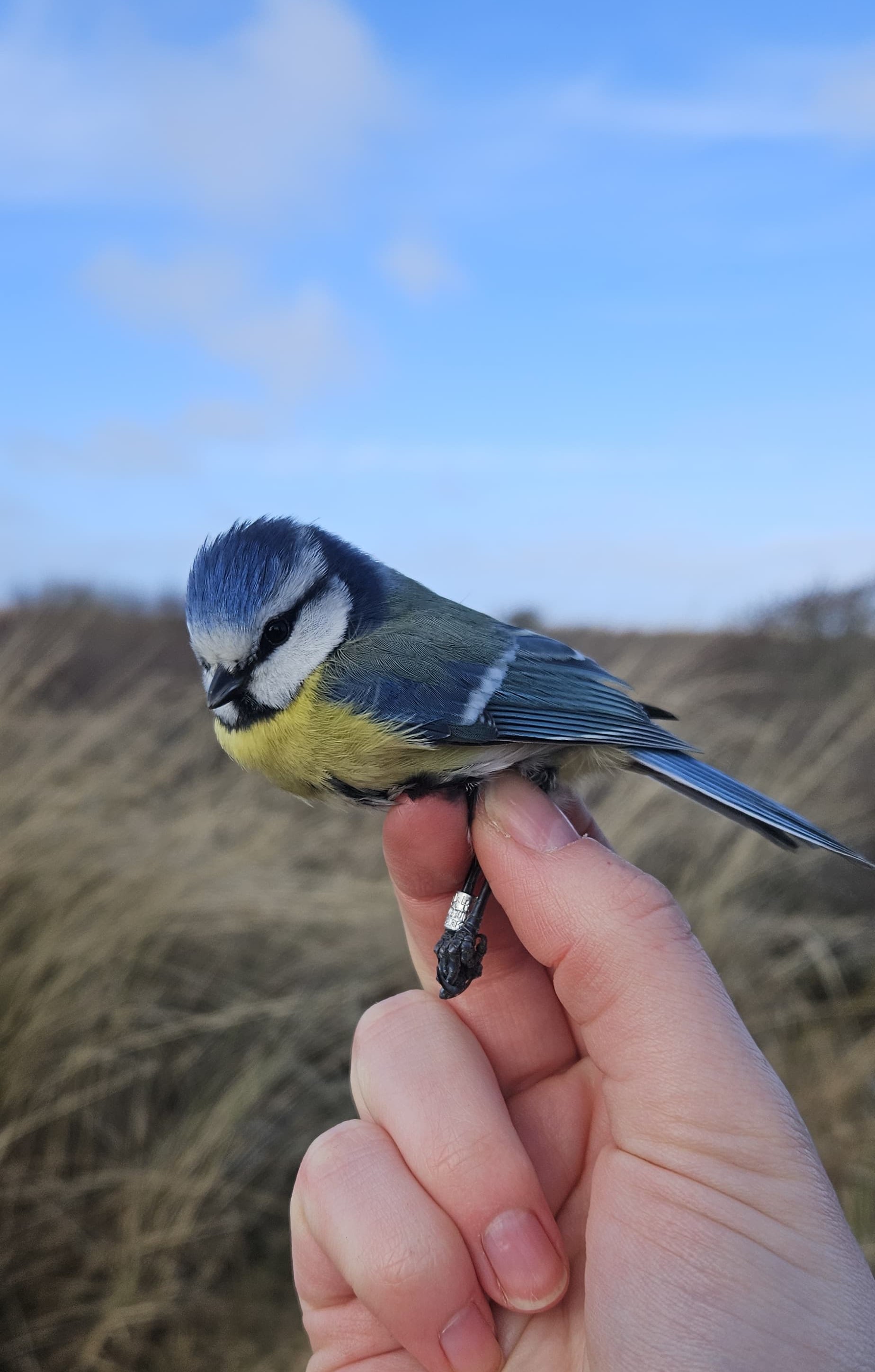
Blue Tit (Blåmejse)
In the afternoon we biked together to the Damstederne and climbed on top of the beautiful dunes hoping to see migrating raptors from there. We spotted several buzzards (musvåge) and red kites (rød glente), sparrow hawks (spurvehøg), goshawks (duehøg), kestrels (tårnfalk) and merlin (dværgfalk). Although it was very windy, the sun was shining, and we enjoyed the afternoon there.
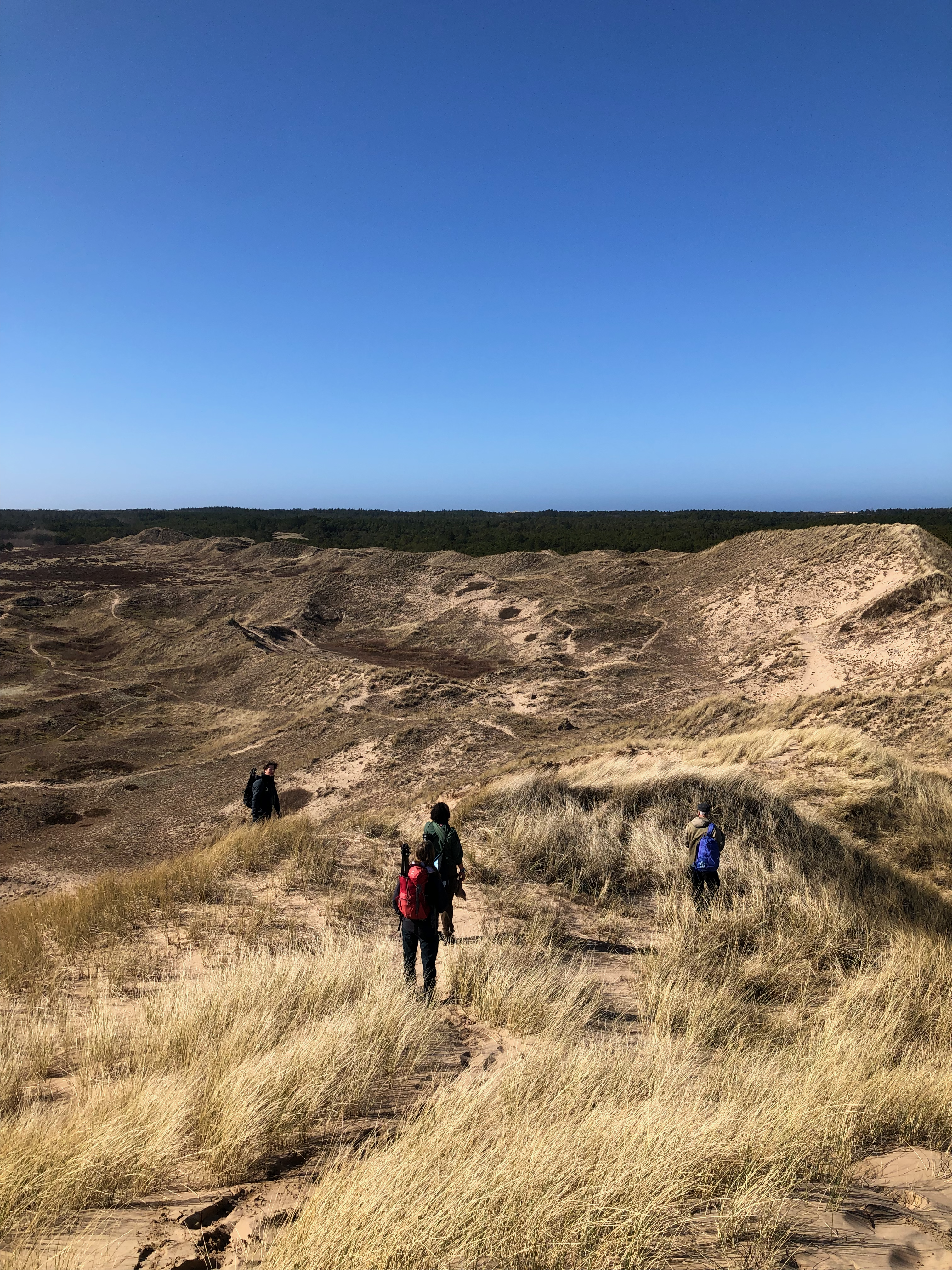
Enjoying the beautiful landscape of the Damstederne and observing raptors. Photo by Olli
After that we went to feed Simons chickens and had ice creams in town. When we came back to the station Janna and I went for an evening swim in the sea, which was a very refreshing after a long day.
What a day! I must say, I’m very fond of the Skagen bird observatory and the beautiful nature surrounding it. The last few days have been definitely one of the most amazing experiences of my exchange in Denmark so far.
Highlights of the observations:
Glaucous Gull (Gråmåge) - 2
King eider (Kongeedderfugl)
Merlin (Dværgfalk)
Ringing (Kabeltromlen):
Gærdesmutte - 1
Jernspurv - 2
Rødhals - 4
Solsort - 1
Gransanger - 1
Blåmejse - 1
Lille Dompap - 1
Rørspurv - 3
Total = 14
Ringing (Jennes Sø - Michael Ancher):
Gransanger - 1
Lille Gråsisken -1
Ringing (Nordstjernvej - Michael Ancher):
Gransanger - 1
Raptor migration in Skagen today
Link to todays observations in Dofbasen from the Skagen area
People: Cora Köberle, Janna Ouedraogo, Mara Glane, Rasmus Matthiesen-Juhl, Christopher Moser-Purdy, Olli Lilja and Anders Rasmussen
"It is not only about the weather, it is also about the birds"
Today Mara said many philosophical things. For example, “a zero count is also a count”. Luckily, we did not have a zero count today. But the ringing team was pretty close, they had only a very low numbers of birds in the nets. Therefore, they had much time to eat cookies. When we joined them from the obs there were sadly almost no cookies left. The time between the rounds was used by the ringing team to cut a birch “with great personal effort” and watch all the migrating birds.
During the morning observation we were able to see the adult King Eider (Kongeedderfugl) and the Glaucous Gull (Gråmåge). In contrast to yesterday it was possible to see the sea during the whole count. We therefore saw some more birds on the water. The songbird migration started slow. Especially the Finch-numbers stayed low over the whole day, maybe the wind was too strong for them. After hours with several thousand Chaffinches (Bogfinke) in the last days, todays count with zero to 35 Chaffinches per hour felt very strange. In one hour, we even had a similar amount of Chaffinches and Twites (Bjergirisk). After some time, the Jackdaw and Wood Pigeon migration started. Thousands of them were migrating throughout the day. Anders, who had chosen to count exactly these species, was therefore busy. We others had a calmer count.
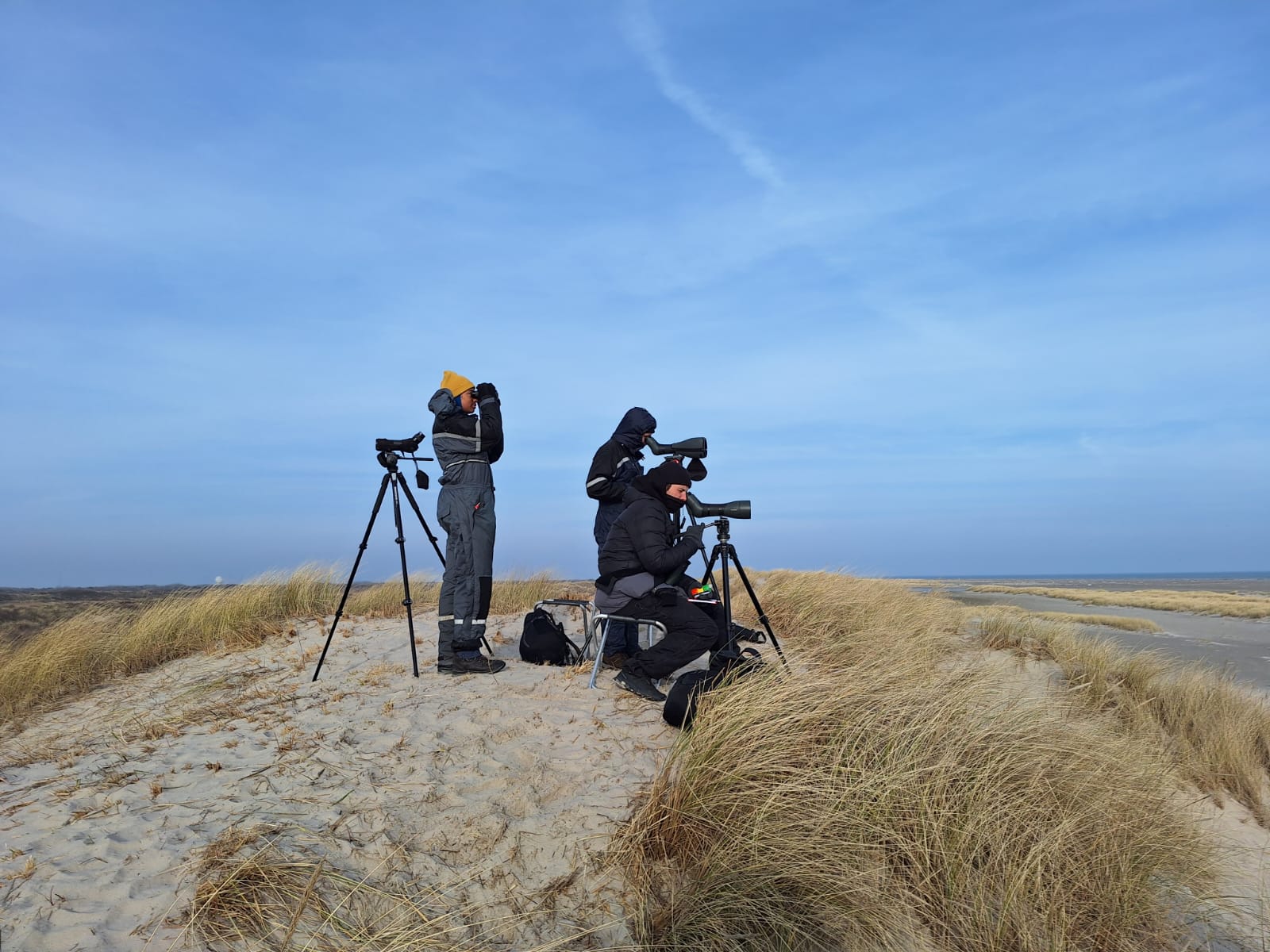 Morning observation in wind and sun
Morning observation in wind and sun
After counting and ringing, we went out to watch the raptor migration. Their numbers were already high during our count. There we were able to see many migrating Harriers (Kærhøg), Sparrowhawks (Spurvehøg), Red Kites (Rød Glente) and a young White-Tailed-Eagle (Havørn). Some of them came very close, so we were able to study them well. That continued later in the day. We saw approximately 250 Common Buzzards (Musvåge), a young Rough-Legged-Buzzard (Fjeldvåge) and a Peregrine Falcon (Vandrefalk). Another highlight were two Goshawks (Duehøg) flying close by, followed by a group of Crows.
After that, part of the team proceeded to count at Skarvsøen. The Cormorants breeding preparations are ongoing there. In total 97 Coromorants (Skarv) were at the lake, 88 adults and 9 young ones. The area was also crowded with Adders (Hugorm), at least 14 of them were bathing in the sun. The team could also find two Caspian Gulls (Kaspisk Måge) at the lake and later on a flying one at the lighthouse.
The afternoon was defined by relaxing, napping and reading. Chris and I went on the lighthouse. It was the first time for Chris to be on there and he found it very “nice and cute”. He enjoyed it to see all the places we have been at from above there.
Rasmus and Anders were doing a trip into town. After a stop at the Harbour with Black Guillemots (Tejst) they went into a Sushi all you can eat (“we did that”). While eating dinner we others were talking about our top birds. The favourite, best, funniest, strangest looking… Or the funniest bird sounds (Dusky Thrush, Cornkrake). We also checked tomorrows weather a lot. It looks very good for migration and we have some goals. After many wrong predicitions about the Steppe Eagle (Steppeørn), he will probably appear tomorrow. Maybe together with the Golden Eagle (Kongeørn).
We are looking forward to a great migration day tomorrow!
Link to todays observations in Dofbasen from the Skagen area
Highlights from the observation
- 1 male King Eider (Kongeedderfugl)
- 1 White-Tailed-Eagle (Havørn)
- 1 Glaucous Gull (Gråmåge)
- 9 Twites (Havørn)
- 1 Little Ringed Plover (Lille Præstekrave)
Ringing (Kabeltromlen)
- Rødhals- 1
- Solsort- 1
Ringing (Jennes Sø, Michael Ancher)
- Solsort- 1
- Gransanger- 1
- Blåmejse- 1
- Lille Gråsisken (ssp. cabaret)- 1
Ringing (Nordstjernevej, Michael Ancher)
- Rødhals- 1
Raptor migration in Skagen today
People: Cora Köberle, Janna Ouedraogo, Mara Glane, Rasmus Matthiesen-Juhl, Christopher Moser-Purdy, Olli Lilja and Anders Rasmussen
